News
Biomedical engineering is continuing its amalgamation of individual disciplines of engineering, fusing it into one discipline that has the health of humanity as its core focus.
A host of startups and companies are developing technologies that will assist the healthcare sector and keep people healthier. United States company, Neocis, is one of those companies. They specialize in Precision Healthcare Robotics.
The Vice-President of Operations and fellow co-founder Juan Salcedo has over a decade of experience in manufacturing and mechanical design for the medical device industry. He holds a Bachelor of Science in Mechanical Engineering and a Master of Science in Biomedical Engineering from Florida International University. The Director of Software, the Director of Manufacturing, and the Director of Clinical Marketing have backgrounds in mechanical engineering too.
One of the robots they have engineered is a dentistry assistant named Yomi, who is particularly gifted at doing dental implants. Starting with a CT scan of a patient's mouth, the robot can analyze the image and find the exact area where an implant is needed.
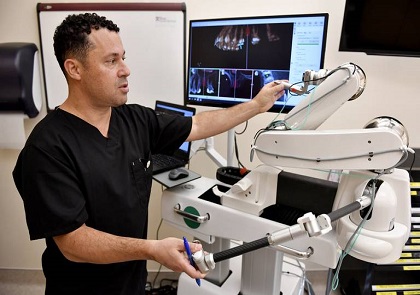
And now, the first dentist in the world to use a robotic assistant has feedback.
Dr. Eddie Kotary is from State College and has opted for the dental assistant.
Kotary, however, does appreciate the concern people might feel about a robot inspecting the inside of their mouth. Nonetheless, the dental robot is not yet artificially intelligent and performing operations by itself, it is merely used for assistance — the professional is still crucial in the equation...for now. He said:
“A common misconception among patients is that the robot does surgery. I still perform the surgery and the machine helps to guide my direction.”
Kotary has done 10 surgeries and all have been successful. He has compared the robot to a Tesla vehicle — instead of driving for you, it helps you drive more accurately. According to Centre Daily, the robot ensures that a patient recovers quicker than traditional surgery, and it drives the cost of an implant down by US$500.
The South Florida Center for Periodontics and Implant Dentistry in Boca Raton, Florida, have just taken on their own Yomi robot after undergoing training to use their new robot assistant.
In rural areas, orthodontics, dentistry, and general healthcare is few and far between. Robots could potentially be implemented in third-world countries to provide dental healthcare. But for now, the Yomi Robot is a sizeable investment for a dental healthcare company to make, as it carries a hefty price.
Mechanical engineers could be crucial to the designing and implementing of surgery-assisting robots. If they are involved in every step, they could bring down the cost of these robots and help rural areas get access to the kinds of robotics that could save their lives, or at least their teeth.
Works Cited
Romanowski, Isabel. “Yomi, Oh My! A Local Dentist Is the World's First to Use a Robot Assistant.” Centredaily, Centre Daily Times, www.centredaily.com/latest-news/article217524480.html
https://www.neocis.com/
As the seasons change and the Northern Hemisphere gets a taste of what the Southern Hemisphere was feeling during winter, commuters on London's Underground could not be more ready for winter than right now.
In the month of August, London observed a sweltering heat wave that scorched the region for days on end.
To quell the effects of the immense heat on one's body, travelers could opt to go underground and use the Tube to get around. Except, Londoners have been complaining about the heat in the Tube too — it has been running for so many years that the earth surrounding it can no longer absorb the heat it emits.

The Tube's construction began in the 1800's, with the Bakerloo line opening in 1906. The initial marketing strategy included a line about how it was the ‘coolest place to be' in hot summer weather.
But all that has changed. Travelers have reported that the temperatures inside the Tube on the Central Line have skyrocketed, making for an uncomfortable commute. So, why is it so hot?
Basically, the heat felt in the tube comes from the train's mechanisms itself.
Rail Engineering's Brian Tinham compiled a report entitled ‘Cooling the Tube' in December 2007, that directly pointed out the sources of heat causing discomfort for passengers. They wrote:
"A little detail: primary heat sources are 38% breaking losses, 22% mechanical, 16% drivetrain, 13% train auxiliaries, 4% tunnel support systems, 3% passengers in trains and 4% passengers on stations."
The London Tube tunnels were dug under Subterranean clay. The clay has been heating up, essentially turning the Underground into a clay oven, with little space for air conditioners. Trains are hot, and in a clay oven, they are even hotter.
More worrying is the expansion of the tube. Engineers are currently rolling out the Elizabeth line, which is set to open in the autumn of 2019. The overarching problem with this new expansion is that more trains equals more heat. The older lines are deeper with less ventilation. The issue is, the hot trapped air is being absorbed by the walls, but the earth does not seem capable of absorbing much more heat than it already is. Temperatures inside the tube reach up to 30 degrees Celsius (86 degrees Fahrenheit).
In 2003, the mayor of London at the time, Ken Livingstone, offered a prize of £100,000 to the mastermind who could come up with a good solution to cooling down the Tube. But it seems that prize has gone unclaimed.
The layman's solution to this would simply be installing a lot of air conditioners to keep the tunnels cool. But, Rail Engineering says, ‘not so fast'. Transport for London (TfL) Cooling the Tube programme director Kevin Payne told Rail Engineering that it is a bit more complex than just putting air conditioners in.
“Payne estimates that removing heat from the network this way costs the upper end of 10 to 50 times as much as putting it in. Partly, also, it’s because warm air from the heat exchangers would have to go somewhere and, given the restrictions on building new ventilation plants across central London, it simply can’t.”
Another problem on the Central Line is that the trains run too deep and don't leave enough space for air conditioners. Engineers have, however, promised that a more sophisticated air conditioning system is coming, but only in 2030. In the meantime, they have introduced an experimental fan-based cooling system at Paul's Tube station. A report by Wired explains how it works:
"The system, which was designed by London Underground's crack cooling squad, pulled fresh air from the street and pumped water around pipes at a rate of 16 liters per second to cool the air by seven degrees before pumping it out at platform level. As a result, St Paul's has gone from one of the hottest stations on the Central Line to one of the coolest."
Passengers have taken to social media to express their disdain with the temperatures inside the carriages of the Underground. The temperatures even rose past the EU guidelines for transporting cows and sheep. The end of the heat of the Central Line is not in sight just yet, so, it falls to engineers to be the light at the end of the tunnel and fix the heat woes in London's Underground.
Works Cited
Temperton, James. “Why Is London's Central Line so Hot? Science Has the Answer.” WIRED, WIRED UK, 10 July 2018, www.wired.co.uk/article/central-line-temperature-london-weather-heatwave.
Rail Engineering, Cooling the Tube, as reported by Brian Tinham : http://www.plantengineer.org.uk/article-images/23757/cooling.pdf
The 4D printing era has officially arrived.
Four-dimensional printing is characterized by a 3D printed object's ability to change shape.
Mechanical engineering researchers at City University of Hong Kong believe they have developed a world-first. They are debuting a ‘ceramic ink' for 3D printers. This means a mixture of elastic polymers and ceramic nanoparticles can be passed through a printer. The object that is produced is then able to be molded into any shape. The researchers published their findings in the Science Advances journal.

Previously, printing with ceramic-based resins produced rigid structures that couldn't change shape. However, this new ceramic ink allows for the production of malleable shapes, similar to origami structures. This signals further evidence of the origami movement that's occurring within the mechanical engineering sector. The title of the research the engineers published was: “Origami and 4D printing of elastomer-derived ceramic structures.”
The ceramic precursors can be ‘stretched three times beyond their initial length' when heated up during the printing process, according to the researchers. Professor Lu Jian, the Chair Professor at CityU's Mechanical Engineering Department — who spearheaded the research — told reporters:
"With the versatile shape-morphing capability of the printed ceramic precursors, its application can be huge. One promising application is electronics. Ceramic materials have much better performance in transmitting electromagnetic signals than metallic materials. With the arrival of 5G networks, ceramic products will play a more important role in the manufacture of electronic products."
The researchers are also confident that there could be impressive aerospace applications in the future. The researchers believe this new process will begin a new chapter of cost-efficient 3D printing with flexible structures.
Works Cited
EurekAlert. “CityU Develops the World's First-Ever 4D Printing for Ceramics.” EurekAlert!, www.eurekalert.org/pub_releases/2018-08/cuoh-cdt081518.php.
“The World's First 4D Printed Ceramics Take Shape Thanks a Team of Mechanical Engineers.” Interesting Engineering, 19 Aug. 2018, interestingengineering.com/the-worlds-first-4d-printed-ceramics-take-shape-thanks-to-a-team-of-mechanical-engineers.
Concrete batteries? It seems that civil engineering and mechanical engineering have met in the middle for a new type of energy storage.
A Swiss startup named Energy Vault has showcased an unorthodox experiment — they have stacked concrete blocks via an electric crane, and in doing this, stored energy.
The startup compares the phenomena to pumped hydroelectric energy storage. Quartz reports that 96 percent of the world's energy storage capacity comes from pumped hydro. This means whenever there is a surplus of electricity, the excess is used to pump the water up into a dam. Then when there is a demand for electricity to be generated, the water falls with the help of gravity. As it descends, the water turns the turbines to produce potential energy.
However, this method can be problematic. What about areas that don't have access to dam water and the subsequent turbines that enable pumped hydro? Well, Energy Vault says stacked concrete could be the answer.
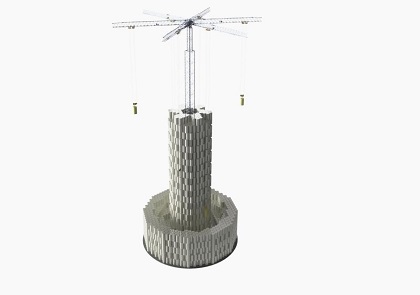
Simply put: when you elevate something against gravity, it stores energy. When it falls, you recover that energy. This is the theory behind Energy Vault's
new system. A crane, with an electric motor, picks up concrete blocks and stacks them in a tower, storing excess energy. Then, the blocks can be dropped from the stack while the motors are run backward and a generator shaft is used to produce the electricity. The startup envisions a 120 meter (400 foot) tall crane that lifts and stacks blocks all around it. The crane is powered by renewable energy like solar or wind — a computer then tells the crane where the concrete blocks are, and a camera assists, too. The block is then lifted, and a stack of concrete blocks begins.
The total energy in a full tower of concrete blocks as pictured above is 20 megawatt-hours (MWh). Quartz reports that it's enough to ‘power 2,000 Swiss homes for a whole day'. The startup is confident that a lower quality concrete can be produced for the plants specifically so they can continue generating energy all day long.
The experimentation is still in its early stages and being performed on a small scale. But, any energy storage applications that could be applied worldwide would be welcomed by governments who are trying to rely less and less on fossil fuel technologies to keep the lights on.
Gravity trains
Some electrical engineers on social media have questioned how viable the concrete block stacking is. Some other engineers point to train regenerative braking as a better option. In California, a company named ARES (Advanced Rail Energy Storage System) has implemented a grid-scale energy management system that is capable of providing utility balance when it is needed.
The system utilizes 300-tonne autonomous train-like vehicles on a train track. When a power utility is in need of power, the vehicles - who would have made their way uphill when the utility had an excess of power - would begin their descent downhill. Their motors then become energy generators and generate electricity in the act of traveling downhill and then braking. The cabs have rocks in them so that they are weighted down and faster when coming downhill.
Here is an example of what it looks like:
Works Cited
Rathi, Akshat. “Stacking Concrete Blocks Is a Surprisingly Efficient Way to Store Energy.” Quartz, Quartz, 30 Aug. 2018, qz.com/1355672/stacking-concrete-blocks-is-a-surprisingly-efficient-way-to-store-energy/.
“Surplus Energy Rides the 'Gravity Train' - BBC News.” BBC, BBC, 28 June 2018, www.bbc.co.uk/news/av/technology-44549962/surplus-energy-rides-the-gravity-train.
Engineers are exceptionally skilled at designing products that assist people who are disabled. But it's not often that we see a disabled person engineering for those who are able-bodied.
While millions of people use cruise control every day, many wouldn't know that it was invented by a blind engineer. His name was Ralph Teetor.
When he was five-years-old, he was blinded in an accident involving a knife. He then suffered from sympathetic ophthalmia — the other eye went blind as a result of the trauma to the first.
Ralph had a knack for engineering from an early age. He would tinker with parts in his father's workshop, from ten-years-old. He developed a talent for feeling mechanical objects and designing parts despite his disability. His hands had become his eyes. He believed he could have a future in engineering.
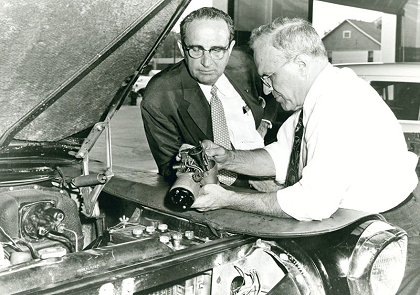
After high school, many universities refused his applications based on his disability. Nonetheless, he eventually got enrolled at the University of Pennsylvania in the mechanical engineering department.
He graduated from university and went to work in the U.S. Navy, where he performed engineering maintenance on warship steam turbines. After leaving the Navy, his father and three of his uncles recruited Ralph for their piston ring production company named Perfect Circle. He eventually became the President of the company and tinkered away on his own small projects too.
He also became the President of the Society of Automotive Engineers (SAE).
During World War 2, war rationing forced motorists to drive 35 miles-per-hour so that they could save on gas. Consequently, Ralph began work on a mechanism that could assist motorists in sticking to one speed during a commute, without having to regulate it themselves.
In 1948, the ‘Speedostat' was born. A decade later, they finally finished engineering a prototype that could confidently be used in vehicles.
The first prototype included a vacuum-driven piston capable of stopping the gas pedal from being pushed far enough.
Nonetheless, true cruise control would have to keep the driver at a constant speed, not just slow it down. That's when Ralph added a ‘speed lock' mechanism with the help of an electromagnetic motor. Upon the tapping of the breaks, the speed lock would be canceled out.
By 1958, Chrysler wanted the Speedostat in their cars and started adding it as an option to their luxury cars. By the 1960s, all General Motors' Cadillacs had it - and its name changed to ‘cruise control.' Then in 1973, when the Organization of Arab Petroleum Exporting Countries (OPEC) decided to stop selling oil to the United States due to political factors at the time, cruise control was lauded as an oil-conserving savior.
Ralph Teetor's legacy proves that despite disability, engineers can defy the odds and create something that completely revolutionizes technology and improves lives. It shows that anyone can overcome a setback and still contribute to humankind.
The invention of cruise control made people wonder how much further vehicles could be automated at the time. Fast forward to today, and we are on the verge of driverless cars.
Works Cited
“The Inventor of Cruise Control Couldn't See.” YouTube, 31 July 2018, youtu.be/298Rb9wNwMg.
Sears, David. “The Sightless Visionary Who Invented Cruise Control.” Smithsonian.com, Smithsonian Institution, 8 Mar. 2018, www.smithsonianmag.com/innovation/sightless-visionary-who-invented-cruise-control-180968418/.
A full rotation of the earth around its own axis produces patterns and rhythms in nature known as the diurnal cycle. Ever since human beings could perceive that the sun rose in the East and set in the West, the assumption was that there was a passage of time.
Then came the measuring of time. Lunar cycles were observed, sundials and water clocks became commonplace in some societies. These all pointed towards evidence that the telling of time could be linked to the diurnal cycles of the earth. By the 14th century, in Europe, mechanical clocks were invented, leading to the engineering of the grandfather clock in 1657. Consequently, the world saw a rise in the ordering of human life around the clock.
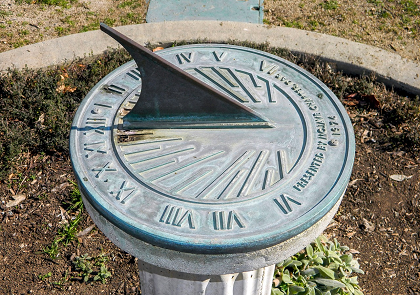
With more and more humans telling time, and governments trying to agree on what the real time was, there was a worrying trend developing in the United States. In the 1880s, each American town had established their own local times based on their reading of the sun. And this caused a headache for the railroad industry. Specifically, the coordinating of trains.
Great Britain resolved in 1840 to begin adhering to a standardized time for their railways. It would be known as the Greenwich Mean Time (GMT). From 1846 to 1848, the railroad stations across Great Britain were all synchronized according to the GMT time. America was having troubles too.
Bafflingly, when it was 6:28 am in Los Angeles, it was 9:28 am in New York. Thus, if each town had its own time defined within its own borders, going cross-country in a train would prove dangerous because two trains traveling on one railroad would want to arrive at the same time — but with the train drivers thinking it was a different time. Metaphorically and literally, it would have been a train crash waiting to happen.
The different states in America realized they would not be able to solely rely on their state-specific reading of time.
In 1918, the American Congress heard and accepted the idea of a standard railroad time. Eastern, Central, Mountain, and Pacific times. Congress eventually passed the Standard Time Act in 1918 and standardized time.
Since then, the rest of the world became dependent on timezones collectively defined with the lesson of railroad travel in mind. GMT has been spun-off and refined into Coordinated Universal Time (UTC), utilizing the advent of atomic clocks which tell time much more accurately. America still adheres to their four time zones that were standardized in 1918.
The change trains and railroads brought to the world, and human life was characterized as the ‘annihilation of space and time’ - engineers had achieved a physical change to the world that had never been observed before. A psychological shift followed - humans became accustomed to a world of travel, speed, and power. And as a result, led to more technological expansion. Many technologies like global positioning systems and the computers that have given rise to them rely on an understanding of atomic time in the present moment.

The world is now observing the fourth industrial revolution. An advancement of technology that could once again disrupt our perception of time, space and energy. As quantum physics’ exploration continues and gives rise to technologies like quantum computing, nanotechnologies, and more, the boundaries of possibilities are growing further and further outward. What this will mean for the majority of engineering industry still remains to be seen - however, the effect is poised to be significant.
How will engineering change human perception of the natural environment next?
Works Cited
“How Did Trains Standardize Time in the United States? - William Heuisler.” YouTube, 5 Feb. 2013, youtu.be/UBpTohx1BOc.
“The Order of Time by Carlo Rovelli.” Penguin Books, www.penguin.co.uk/books/301539/the-order-of-time/.
“The Railroad Journey and the Industrial Revolution: Crash Course World History 214.” YouTube, 1 Nov. 2014, youtu.be/GYAk5jCTQ3s.
What is a side-hustle?
It's really anything that you can do on the side to make money while pursuing higher education or employment. It may be a hobby you are trying to monetize for a little bit of extra cash, it may be a serious venture you are working to pursue but unable to generate an income from just yet, or it may be something you've already started that is producing some extra income for you.
Some qualified engineers take it a step further. Many understand that the traditional trajectory of getting qualified, finding a big company to fit into and staying there for 40 years is a thing of the past.
Some engineers are becoming part of the gig economy. The gig economy is a ‘labor market characterized by the prevalence of short-term contracts or freelance work as opposed to permanent jobs.' And some people have side-gigs to supplement their income while they continue to search for a more permanent position elsewhere. Prospective engineers are learning to become resilient.
Engineers are noticing that they can also create several side-hustles that generate money they can use to achieve even bigger things later on in life.
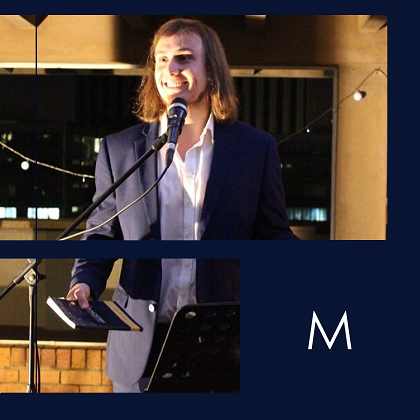
In the engineering world, the side-hustle usually culminates in a startup idea that requires the input of some like-minded team members. Nonetheless, when you pursue a side-hustle, it's important to make sure you still have the backup plan.
Previously, the backup plan might include a ginormous time investment of going to a brick-and-mortar tertiary institution and putting the side-hustle on pause. Starting a side-hustle while sticking to a strict schedule of classes and examinations is a tall order.
Early on, some engineers fail to realize that their engineering course may be teaching them the business principles they need to become an entrepreneur. Albert van Wyk is a South African industrial engineer. At the age of 22, he was already investing in property and building side-businesses that began generating an income. He became one of South Africa's youngest millionaires.
Albert went on to write a book titled: ‘How to become a Millionaire at 22.'
But it was the skills he was learning in his engineering degree that improved the business-side of his side-hustles. He has started a podcast named ‘Millionaire Insights with Albert van Wyk,' where he inspires like-minded engineers and entrepreneurs in South Africa, to become better businesspeople whilst upskilling and acquiring formal qualifications.
In the latest episode of his podcast, he said:
“I studied Industrial Engineering. I actually completed my degree in four years and became an industrial engineer. And then, I worked for one year in the industry as an engineer before I quit my job to become a full-time entrepreneur. One of the key terms that we learned in industrial engineering is called a value chain analysis. You take each process, each activity, in your chain of events that creates value for your business, and you analyze each of them.”
Industrial automation engineering can teach that, even in business, a person can produce an efficient chain of procedures that leads to the creation of a valuable outcome. But even mechanical engineers are obtaining their qualifications, then swimming against the tide.
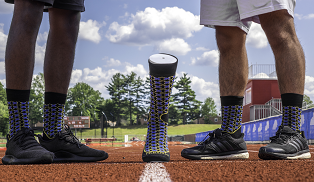
Inaam Khan is a mechanical engineer from Manchester, Connecticut in the United States of America. His motto, and advice to prospective entrepreneurial engineers is: ‘Aim high, don't be shy.' He founded his own sock company after graduating. He aptly named the company I-Khanic. In an interview, he said:
“My parents have been very supportive, first of all. They never cared that their son had an engineering degree and was out there selling socks.”
Turning the side-hustle into the main-hustle takes grit and determination. It is recommended that students and graduates continue to upskill themselves — so they are job-ready and educated — while trying to be as entrepreneurial as possible.
Works Cited
Nyberg, Ann. “Manchester Mechanical Engineer Inspired by Social Media Launches Sock Company.” WTNH, WTNH, 14 Aug. 2018, www.wtnh.com/on-air/nyberg/manchester-mechanical-engineer-inspired-by-social-media-launches-sock-company/1366407095.
“Millionaire Insights with Albert Van Wyk.” Iono.fm, Https://Iono.fm/p/360, iono.fm/c/3590.
Electrical engineering professionals will have to roll with the punches as new technology takes over the quarrying business and sends the industry into the future. Volvo Construction Equipment and partner Skanska are testing an Electric Site project — a quarrying operation of the future that will look completely different to anything that has come before it.
It's all going down at Vikan Kross quarry. The group is experimenting with new concept machines, work methods, and brand new site management systems, which have never been tested at a quarry before. They are focusing on electromobility and automation to meet new emissions targets — a move that will set the bar for the mining industry for some time to come.
Gunnar Hagman, CEO of Skanska Sweden said:
“This is the first time that anything like this has been attempted in the quarrying industry and, if successful, Electric Site could serve as a blueprint for transforming the efficiency, safety and environmental impact of quarries around the world.”
On 29 August 2018, the engineers were ready to debut their new Electric Site. For ten weeks, the autonomous Volvo machines will engage in production. They will only emit 95 percent of the emissions that a normal mining setup would produce. The companies will also spend 25 percent less than they would have with the old technology. The engineers have electrified each level of the transport stages in the quarry. Hagman said:
"We have to completely rethink the way we work and how we look upon machine efficiency — pushing the boundaries of our competence. The total site solution we developed together with our customer Skanska is not a commercial solution for sale today and we will evaluate the outcome of the tests but we have learnt so much already, elements of which will be fed into our future product development."
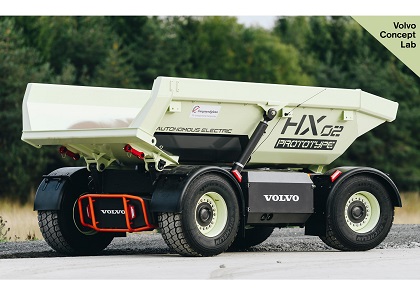
The quarry is utilizing eight prototype HX2 autonomous battery-electric load carriers. These fully electromobile vehicles will carry the extracted resources from the quarry. The engineers had initially tested out a first iteration of the load carrier called HX1. Once they had confirmed the electric drivetrain was capable of being driven by the battery technology they went ahead with producing the HX2.
The engineers then went on to fit previously emission-emitting technologies with electric motors. A primary crusher excavator prototype was born, ready to work on the site. One benefit of electric motors is that the site is much quieter than a normal quarrying site. But Chief Project Manager for Electric Site at Volvo CE Uwe Muller explains just how complicated an electric upgrade to an excavator is:
"To fit the new components in the machine without increasing its size required a significant amount of repackaging work. However, in terms of the operator interface and controls, nothing has changed - it's operated in exactly the same way as a conventional Volvo extractor. If the cable is connected, the machine will automatically start in electric mode. If it's not, it will start in diesel mode. Because the machine will be relatively static - only moving a few meters once or twice a day as the excavator works its way through the blasted rock - it's ideally suited as a fully electric machine on a cable."
The thinking behind this reflects the kind of renewable energy setups at mining setups. Some mines have solar panels and diesel setups so that when the renewables cannot pick up the slack, it can default back to diesel generators and continue powering the mining operation. Muller continues:
“This has allowed us to make it a zero-emission excavator when it’s plugged into the grid. However, we’ve designed it with flexibility in mind, so that we can have the option of using the diesel engine when it’s needed, for example, to reposition the machine or quickly movie it prior to blasting.”
Works Cited
Casey, JP. “Volvo and Skanska Begin Tests at Prototype All-Electric Mining Site.” Mining Technology, 4 Sept. 2018, www.mining-technology.com/news/volvo-skanska-begin-tests-prototype-electric-mining-site/.
“Testing Begins at World's First 'Emission-Free' Quarry.” Volvo Construction Equipment, www.volvoce.com/global/en/news-and-events/news-and-press-releases/2018/testing-begins-at-worlds-first-emission-free-quarry/.
ZipRecruiter, one of America's top job recruitment sites, has reported that the most in-demand jobs are in the electrical engineering industry. The site is visited by millions of people every day, and the most searched for positions — in fact, the top five searches — were all pertaining to electrical engineering.
The searches ranged from entry-level electrical engineering jobs for advanced diploma holders, up to the kinds of jobs that require Professional Engineer recognition. ZipRecruiter confirms many of the inquirers are looking to be electricians on construction sites. Other inquiries are for particularly specialized positions within electrical engineering.
But, mostly, skilled workers are looking for any jobs they can get in the electrical engineering field. Furthermore, ZipRecruiter has indicated that these job seekers are often looking for a promotion.
The report interestingly stated:
“Given the high demand for and low supply of these workers, it’s likely that most of these job hunters are already employed and looking to level up into higher-paying positions.”
Worryingly, the supply of workers cannot keep up with the pace of electrical engineering jobs being listed in the US. The site has its own ZipRecruiter Opportunity Index which takes a look at the availability of workers versus how many jobs had been listed. The index in electrical engineering resulted in a 1:4 ratio. There is one worker to every four listed electrical engineering jobs on the website. Moreover, for electricians, the ratio was 1:5.
Those ratios are the averages across the entirety of the United States. The numbers in state-specific data sets seem to look even more concerning.

Start studying (and working)
The numbers have highlighted a big need for qualified and skilled individuals in the United States. ZipRecruiter says the data also indicates that electrical engineers and electricians should be open to relocating. For example, in Ann Arbor, Michigan there were nine electrical engineering jobs open to one applicant at a time. In the New York metropolitan area, the highest number of applicants existed. Detroit apparently had the biggest labor shortage of all.
The data is also telling a poetic story about the situation throughout the rest of the world. Students are encouraged to examine the job listings for a particular country and assess which engineering disciplines are in demand, before picking a discipline to pursue. They are also encouraged to upskill and gain qualifications for the available jobs they could qualify for.
Shortages across Australia
CNBC reports that Australia is also seeing a rise in job listings for site engineers and electrical foreman. The construction and property market is purportedly on the rise, and that means that electrical systems for new developments will be required.
According to an article written by the Dean of Engineering at the University of New South Wales (UNSW) Sydney, and an Associate Professor in UNSW’s School of Minerals and Energy Resources Engineering, electrical engineers in Australia currently make a median salary of US$46 693.72 per year.
Works Cited
“Electrical Engineers, Electricians in High Demand in These Markets.” The Bay State Banner, 15 Aug. 2018, www.baystatebanner.com/2018/08/17/electrical-engineers-electricians-in-high-demand-in-these-markets/.
Gilchrist, Karen. “These Are the Best Jobs in Australia Right Now.” CNBC, CNBC, 4 Sept. 2018, www.cnbc.com/2018/09/04/best-jobs-careers-australia-teaching-tech-construction-healthcare.html.
z3524864. “Mining Bust's Gone and the Boom's Back: We Need Engineers.” UNSW Newsroom, 29 Aug. 2018, newsroom.unsw.edu.au/news/general/mining-bust’s-gone-and-boom’s-back-we-need-engineers.
China was abuzz at the 2108 World Robot Conference 2018 in August. Manufacturers from around the world descended on Beijing to showcase their latest robotic endeavors. China is stepping up its robotic output and intends to increase manufacturing operations as we approach 2020.
Xin Guobin, China’s vice minister of industry told media officials:
“Robots are the jewel in the crown for the manufacturing industry...a new frontier for our industrial revolution.”
According to Interesting Engineering, China intends to have most of its industrial robots engineered on home soil by 2020. China is currently the world leader of engineering and selling robots — in 2017, they sold 141,000 industrial units.
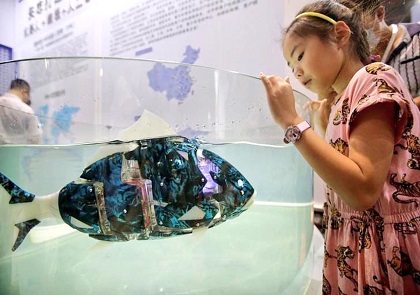
China has launched an initiative, called ‘Made in China 2025’ to upgrade its industries. They hope that by 2025, they will be the world leader in intelligent manufacturing and smart factories.
Attendees of the World Robot Conference were surprised that many of the robotics manufacturers had debuted robots that were seemingly inspired by nature.
The new design frontier indicates that robotics engineers are trying to figure out how to design robots that are more flexible, speedy, responsive, and intelligent. One of the robots that made journalists curious was named the BionicFlyingFox.
The BionicFlyingFox is an intricately designed robot that mimics the flight of a bat. It has been designed with intelligent kinematics and can replicate unbelievable flying maneuvers. A motion tracking system ensures that it doesn't hit any walls or veer off and crash. This makes the robot semi-autonomous, but needless to say, one day it will likely fly on its own.
The robot was created by Festo, a German multinational industrial control and automation company. They produce and sell pneumatic, electrical control and drive technology for factory or process automation.
While their BionicFlyingFox robot is impressive to look at, it’s a statement of how well-designed their other industrial technologies are. Creating agile robots is imperative to the future of robotics. In biomedical engineering, we are already seeing the rise of robots that can perform maneuvers humans are unable to replicate. As robots replace the repetitive jobs that humans have done in the past, ensuring robots are as agile and flexible as possible is important work.
And they need to be lightweight in the future as well — the fox only weighs 580 grams. And it’s getting smarter. Engineers are utilizing motion tracking systems, which are hooked up to a computer that evaluates and learns from the data of each flight. The robot can aptly alter its course on each individual flight based on the findings of its previous flights.
It seems that the time of flexible, agile, autonomous, intelligent robotics has truly come.
Works Cited
Kirstel, Evan. “Evan Kirstel (@Evankirstel).” Twitter, Twitter, 4 Sept. 2018, twitter.com/evankirstel/.
“Our Favorite Robots From China's 2018 World Robot Conference.” Interesting Engineering, 20 Aug. 2018, interestingengineering.com/our-favorite-robots-from-chinas-2018-world-robot-conference.
In July 1969, Neil Armstrong became the first man to walk on the moon as part of the Apollo 11 mission. In August and September 1977, NASA launched Voyager 2 and then Voyager 1 — space probes with the primary purpose of exploring the outer reaches of the galaxy. Voyager 2 is still the only space probe that has ever visited Uranus and Neptune. The Voyager spacecraft are still exploring outer space 41 years later.
What do the Apollo missions and the Voyager spacecraft have in common? The modern smartphone outranks the computer technology that made those space explorations possible. It took the Apollo 11 missions only four Apollo Guidance Computers (AGC) to get man to the moon.
Even more impressive, it was a woman who got man to the moon (sort of). Margaret Hamilton, a systems engineer who wrote the code that defined the Apollo 11 mission, was awarded the Presidential Medal of Freedom by Barack Obama in 2016. The code that was written, when stacked, stood taller than Hamilton.

However, as pointed out by Popular Mechanics, at the time of the missions, the computers utilized were ten years ahead of their time. This was before the microchip ever existed.
IBM assisted NASA in creating the computer infrastructure that facilitated the Apollo missions. Rhuaridh Marr, from Metro Weekly writes:
“The Apollo Guidance Computer directing the rocket was an incredible achievement for NASA -- it was the first computer system to provide real-time information about the spacecraft as it navigated, detailing important stats and allowing for automatic navigation.”
Nonetheless, by the time the Apple II personal computer came out, the technology that guided astronauts through space was outperformed. However, it is undeniably true that NASA ran an entire space exploration program from start to finish with less technology than what’s inside an iPhone. The Apollo Guidance Computer only had four kilobytes of RAM, where modern-day laptops have eight gigabyte RAM sticks. An Apple iPhone’s processor runs at 150MHz, whereas the Apollo computer ran at 1MHz. And they only had 32 kilobytes of storage capacity. Marr writes:
“The Apollo computer took a spacecraft to the moon and back, and it’s 150 times less powerful than a processor that knows whether you’re walking or driving.”
You can now access the exact code that was used on the command and lunar modules that made the Apollo missions possible here.
Not done yet
NASA is not done sending probes into space just yet. They have just launched a new probe that is set to ‘touch the sun’.
NASA is sending a probe to fly into the low solar corona. It will comb through coronal plasma and magnetic fields that appear to facilitate the acceleration of energetic particles nearby the sun.
The Parker Solar Probe will be the fastest spacecraft in history. It will also get seven times closer to the sun than the previous record holder, the Helios B. It is expected to get within 3.9 million miles of the sun’s surface. It will orbit the sun 24 times, capturing data that will be pored over down here on earth.

A lot of the information that will be perused will be the data generated on the way to the sun. While researchers are hopeful that data can be generated while the probe is in close proximity to the sun, they say that might not garner any results. The strongest focus will be put on understanding solar wind.
At its optimum speed, the Parker Solar Probe will orbit the sun at 430,000 miles per hour. It will experience temperatures of 2,500 Fahrenheit (1,400 degrees Celsius). A carbon composite engineered shield is what protects the probe from the scorching temperatures of the sun. It also employs a white, reflective alumina surface layer that lessens the absorption of heat. The craft is powered by photovoltaic solar arrays.
The probe will hopefully report back on which segment of the sun is responsible for heating up and distributing the solar wind that is emitted and sent towards earth and other planets. It was engineered by Johns Hopkins University’s Applied Physics Laboratory.
Works Cited
Grossman, David. “The One Way Apollo Computers Still Beat the iPhone.” Popular Mechanics, Popular Mechanics, 15 Feb. 2018, www.popularmechanics.com/space/moon-mars/a25655/nasa-computer-iphone-comparison/.
“To the Moon and Back on 4KB of Memory.” Metro Weekly, 7 Dec. 2017, www.metroweekly.com/2014/07/to-the-moon-and-back-on-4kb-of-memory/.
The automation of mining operations is inevitable. Mining is a high stakes business with costly equipment and a small margin for operational error. Thanks to the digital disruption of the sector, mines are being made safer, more efficient, and productive.
Not many underground mining operations are automated. However, this will soon change. The Syama Mine in Mali is tipped to be the first fully-automated underground mine in the world. Resolute Mining, an Australian company, currently owns the gold mine.
The company intends to completely reorganize the mine with new technologies. An automated fleet of driverless trucks will drive the product around, and a remote monitoring team will be watching everything closely to ensure the mine is working at peak efficiency. Loaders and drills will be automated, too. Sensors will monitor the entire process providing real-time analysis of the health of the operation, and more.
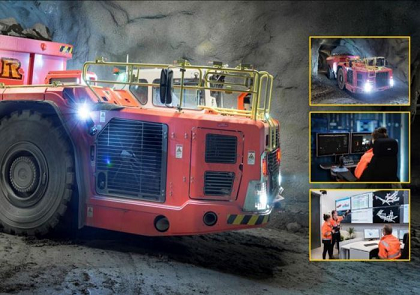
As a result, the mine will not need to recruit or pay any drillers.
Is this a good thing or a bad thing? Africa is a prime candidate for the leapfrogging of technologies and is still a resource-rich continent. Many African workers rely on being employed as drillers in mines so they can put food on the table at home. Would the automation of these mines lead to job losses?
Resolute Mining, the company behind automating the Syama Mine, has said that not many jobs will be lost. And they are advocating for the upskilling of their workers.
What might it mean for the future of the mining industry? How might it disrupt a mining economy? How many jobs will be lost? Resolute Mining managing director John Wellborn says the company has an answer to these pertinent questions. He told ABC News:
“Rather than focusing on putting in wells in local villages and handing out school books, we’re focused on upskilling, training and empowering the local workforce.”
The automation will also save the mining company money — it will slash mining costs by 30 percent. There is also less chance of loss of life as well.
“Automation is often seen through the prism of a vehicle factory where you blow the whistle and sack 200 of your assembly line workers and replace them with robots or a large group of sewing machine operators who can be replaced by a machine. I often get asked about the political impacts of automation in Africa, with the perception that governments will be concerned we’re laying off workers. What we’re doing has very little to do with reducing workforce - it has everything to do with efficiency and productivity.”
The employees of the Syama Mine are waiting with bated breath. They are interested in seeing how automation might change or improve their working conditions, and whether it will mean prosperity for Resolute Mining.
Goldmine blues
Further afield in South Africa, a gold mine is ready and prepared to let a large number of employees go. While a mining surge has been observed in the country, gold production is down. Gold Fields has indicated it must let 1,100 of its permanent staff and 460 of their contractors go at its South Deep mine.
According to Times Live, the mine employs 3,614 full-time employees and 1,940 contractors. The mine had purportedly spent USD 20.2 million more than it had earned in the second quarter alone. Gold Fields has lost USD 275 million in South Africa.
It is not only Gold Fields that is actively pursuing a retrenchment scheme; Impala Platinum is to let 13,000 employees go, and will close 5 of their mines. Gold Fields CEO Nick Holland has previously said that the way gold has been mined for the last 100 years is not how gold will be extracted in the next 100 years.
South Africa seems to be significantly behind in leveraging new mining technologies and keeping the businesses afloat. It’s a widely held belief that Internet of Things technologies are necessary for the sector; the one thing not being said is whether miners and workers will receive upskilling work.
The mines may implement new technology, but the redundant workers might not be aptly skilled to continue working in the mine as it changes. The question remains: What will become of the uneducated driller that currently works at the mine? The answer: Upskilling.
The digitization of industries in South Africa may further intensify an already worrisome jobs crisis. Associate Director of Strategy and Operations at Deloitte, Jan-Adriaan du Plessis, in a discussion on South African radio, said:
“If you look at history, technology advancement, generally, creates more jobs than it destroys. That’s what the studies tell us. The focus should not be on trying to save as many jobs as possible, but to really upskill and repurpose jobs in the required areas.”
Nonetheless, with mining unions trying to protect their workforce, the loss of jobs in an already highly unemployed society does not make for an optimistic outlook. What is clear is that mining employees of past, present, and future, must upskill as much as possible and be ready for the future of mining on a continent that is ready to embrace new technologies with open arms.
Works Cited
Lucas, Jarrod, and ABC Goldfields. “Aussie-Owned African Gold Mine to Be World's First Robot-Only Underground Digs.” ABC News, Australian Broadcasting Corporation, 8 Aug. 2018, www.abc.net.au/news/2018-08-09/worlds-first-fully-autonomous-underground-mine-in-africa/10090932.
Roux. “The Future of Mining, South Africa's Lifeblood (and Employer of 500 000 People).” 702, 17 Apr. 2018, www.702.co.za/articles/300105/the-future-of-mining-south-africa-s-lifeblood-and-employer-of-500-000-people.
Seccombe, Allan. “Gold Fields to Cut up to 1‚560 Jobs at South Deep Mine.” Times LIVE, Sunday Times, www.timeslive.co.za/sunday-times/business/2018-08-14-gold-fields-to-cut-up-to-1560-jobs-at-south-deep-mine/.
The Engineering Institute of Technology (EIT) is pleased to announce that from 03 September 2018, a new application system will be made available to allow interested students to apply online for their course or program of choice.
The implementation of this new online system will make it easier for interested parties to apply to study with EIT and to be kept informed of the status of their application.
We strongly recommend that you contact our qualified Course Advisors before lodging an application so we can counsel you on the suitability of the course and the application requirements. Simply complete the request form on the relevant program page and we will get in touch with you to assist you.
We look forward to receiving your online application to study with EIT in order to help you advance your career!
If you need any assistance, please do not hesitate to contact us:
Dear Colleagues
We wouldn’t have breakthrough discoveries without that wonderful quality – curiosity - from inventing fire, the aircraft to the Google search engine. That magical feeling that goes about investigating new information, pondering on a different way of doing something or simply trying something out new (and often having that incredible ‘Ah hah’ moment) is an innate quality we all have.
No More Boredom
 Without curiosity we would have a very boring and unproductive world. It is key to your success in your engineering career. However, many managers and companies fear it as it can be rather disruptive and encourage chaos. Something engineering professionals with their love of order aren’t always fond of. Certainly, you don’t want chaotic curiosity occurring in a bridge design otherwise you may have some catastrophic results.
Without curiosity we would have a very boring and unproductive world. It is key to your success in your engineering career. However, many managers and companies fear it as it can be rather disruptive and encourage chaos. Something engineering professionals with their love of order aren’t always fond of. Certainly, you don’t want chaotic curiosity occurring in a bridge design otherwise you may have some catastrophic results.
Without any question – curiosity is particularly important to engineering professionals and their organisations in lifting one’s creativity and strengths. It improves your performance especially in an uncertain economic environment making you more resilient to the changes coming.
Typical benefits of curiosity include: Fewer errors when making a decision as you are constantly questioning assumptions and stereotypes; driving innovation by being creative and questioning; perhaps reducing conflict as you consider other people’s perspectives and finally more open communications with others as you open your mind to alternatives.
However, in my experience, leaders of organisations often avoid encouraging curiosity. They have huge and often brutal performance targets that your are being measured by. This means that they are absolutely focussed on these targets in their clinical search for efficiency and can’t avoid time for experimentation and curiosity.
How do you increase curiosity in your engineering life ?
A few suggestions (from Francesca Gino modified by my take on engineering):
Surround yourself by curious people. Hire, build your team from and actively move towards curious people. This will have an avalanche effect on your performance and that of your team in lifting your creativity dramatically.
Model yourself as an inquisitive curious person. Ask questions and investigate and encourage others in your team to do the same.
Encourage learning every day all day. Open the opportunities to further study to all your team and certainly yourself. I dedicate an hour early every morning on study and gaining a skill or an appreciation in a new area. Sometimes a painful pursuit as it challenges one’s brain. But it is the only way forward in building and sustaining your engineering career.
Randomly set up regular “What if” and “How Might we” sessions on particular topics with your team.
Remember that Millions saw the apple fall, but Newton asked why.
(Bernard Baruch)
Thanks to Francesca Gino of Harvard Business Review for an interesting take on this topic.
Yours in engineering learning
Steve
Mackay’s Musings – 21st August’18 #677
Another bridge has collapsed and it could have been avoided. Well, that is what at least one engineer thinks. This one came down near Genoa in Italy, just this week. Euronews reports that an engineering professor, back in 2016, had urged the authorities to ‘completely rebuild’ the Morandi Bridge because of deterioration.
On the 14th of August 2018, the bridge came plummeting down causing at least 35 fatalities. And many more are feared missing. In total, 200 meters of the 1.1 kilometer bridge plunged 50 feet taking cars and trucks down with it.
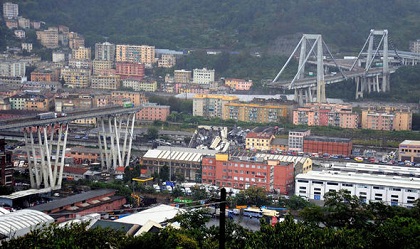
Antonio Brencich, a professor of engineering at the University of Genoa told ingengneri.info:
“The continuous costs for its maintenance suggest that in a few years, these costs will exceed the costs of reconstruction of the bridge; at that point it will be the time to demolish it and rebuild it.”
The bridge, which was constructed in the 1960s, provided a link between France and Rome. It was engineered by Riccardo Morandi, who was renowned for his work with reinforced concrete. While it's a cable-stayed bridge, it utilizes reinforced concrete for the cable stays instead of regular cables.
The lifetime of the bridge was supposed to be 100 years, but Brencich alleged that the east tower of the bridge was not appropriately reinforced. It was, however, the west tower that seemed to give way.
Autostrade del Tronco Genovese, the maintenance authority responsible for maintaining highways and bridges, says that the bridge’s recent checks did not indicate that it was in imminent danger. Recent torrential rain in the area is being considered as a contributing factor to the bridge’s collapse. Other online commenters say that the bridge may have been struck by lightning.
A Genoese architect Diego Zoppi speaking to the ANSA news agency said:
“The problem with the Morandi Bridge is that the tie rods were made of concrete and not metal. In the 1960s they did not expect concrete to degrade and then collapse. Fifty years ago there was unlimited confidence in reinforced concrete. It was believed to be eternal. With the continuous vibrations of traffic, the cement cracks let air pass through, which reaches the internal metal structure and makes it oxidize. For this reason, the bridge has always required extensive maintenance work. It was very expensive to manage.”
The concern now is for other structures dated around the same time as the Morandi Bridge. These will need to be scrupulously checked for any signs of wear and tear, to prevent similar accidents.
Further focus will be given to the loads that the bridge endured over the years; the level of fatigue it had experienced could have been significant. Mehdi Kashani, associate professor in structural mechanics at the University of Southampton, talking to the Independent said:
“The bridge engineering research community should take this seriously in their future research to improve the resilience of our infrastructure under extreme loading.”
Engineering experts say it is too early to confidently attribute cause to the collapse of the Morandi Bridge, but point to the fact that corrosion of the reinforcement in the concrete is a likely explanation. What remains clear is that regular maintenance for bridges should be enforced, and attention paid to experts who indicate that structural issues exist.
Works Cited
Fiorentino, Michael. “Engineer Warned in 2016 That Genoa Bridge Would Need Rebuilding.” Euronews, 14 Aug. 2018, www.euronews.com/2018/08/14/engineer-warned-in-2016-that-genoa-bridge-would-need-rebuilding.
Griffin, Andrew. “Experts Weigh in on Shocking Italian Bridge Collapse.” The Independent, Independent Digital News and Media, 14 Aug. 2018, www.independent.co.uk/news/science/genoa-bridge-collapse-italy-why-did-disaster-engineering-experts-a8491811.html.
The casting of concrete is becoming smarter and smarter by the day.
The digitization of concrete casting has revolutionized the way both architects and engineers do their jobs. It is now possible to 3D print concrete in novel geometric patterns that defy belief and produce artistic results. However, it’s not only for aesthetically pleasing results — the concrete slabs are more lightweight, too.
At their thinnest point, these ‘smart slabs’ are only 20 millimeters thick, making them far lighter than a traditional slab of concrete.

Digital fabrication technology can ensure that a casted slab of concrete holds the structural rigidity of concrete, while showcasing geometrical shaping only a 3D printer and the additive manufacturing process can produce.
Currently, these slabs are being used to build a concrete roof. A three-storey home project, known as the DFAB House, is being built in Switzerland by science, engineering and mathematics scholars from ETH Zurich University.
The process relies heavily on the digital fabrication — the architectural measurements are plugged into the computers, and then the robots begin building. Computer models, CAD software (of which the team have apparently coded their own) and prototyping assists with the fabrication of the elements needed to build the smart structures. CNC milling and 3D printing then finishes the process.
Eleven smart slabs are printed into 7.4 metre long, 78-square-metre segments, individually, and then, joined together on-site.
The project is purportedly the first full-scale architectural project using 3D printed sand printing techniques.
The arrival of digital fabrication means the parts necessary for construction can be produced on demand. This is much quicker than relying on prefabricated parts. In construction, modular fabrication techniques are getting better than prefabrication ever was. Digital technologies and cutting-edge industrial manufacturing equipment makes the process much quicker and ensures the output is of higher quality. On-site fabrication will become the new normal.
Andrew Watts, CEO of Newtecnic, an engineering technology firm, spoke to The Engineer about digital fabrication, and is of the opinion that it is the future. He told the publication:
“Prefabrication is a nice idea, but it doesn’t provide the flexibility needed to put things together where you have a lot of different companies and contractors working together on the same project. There’s often a need to put things together in a sequence where were you don’t just turn up with something, install it and it’s finished. You need to add sequential components later on while there are lots of other people doing work around you.”
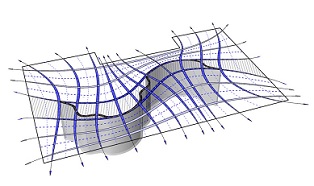
Watts believes robots and drones will be familiar sites on-site as well. The digital world and its mechanisms will unquestionably take over the heavy lifting and monitoring on-site in the future.
Works Cited
“The Smart Slab - 3D-Printed Formwork for a Radical New Concrete Aesthetic.” Dbt, dbt.arch.ethz.ch/project/smart-slab/.
Wade, Andrew. “Digital Builds: The Technology Taking Construction to the next Level.” The Engineer, 7 Aug. 2018, www.theengineer.co.uk/digital-construction-technology/.
The war against plastic is gathering force.
Environmentalists have made it clear: the continuing use of plastics bodes badly for Planet Earth. It is gratifying to learn that the initiatives to eliminate or reduce the use of plastics are gathering speed and popularity. For example, Starbucks aim to remove plastic straws from their global stores by 2020. Some restaurants have taken the plunge and are offering customers stainless steel or cardboard straws.
The world’s oceans are filling up with plastic and this can no longer be ignored. Consumers, for the most part, are woefully unaware. Others are indifferent to the knowledge that the array of plastics they use, and then discard, often end up in the ocean. If eradication isn’t on the table, perhaps a better use for the discarded plastic exists — a permanent home other than landfill or the ocean.
Engineers have been busy devising a solution.

200,000 plastic bags and 63,000 glass bottles that would have otherwise been discarded in a landfill, have been used in the laying of a road in Craigieburn, a suburb in Melbourne, Australia.
According to BBC News, there are 40 million kilometers of roads in the world. In most third world countries, road infrastructure could mean continued industrialization and more prosperity. And if plastic could be recycled and used for road infrastructure globally, that could really assist in finding a place for waste worldwide.
What is the best way to recycle plastic and re-use it in road-building?
Engineers have come to the rescue
Scottish engineering start-up MacRebur has suggested turning plastics into pellets and then mixing them into tar mixtures.
Engineer Toby McCartney told BBC:
“How can we solve two world problems? The poor quality of roads we drive on and the waste plastic epidemic that we all see in the world today. We use waste plastics to add into an asphalt mix to create a stronger, longer lasting, pothole free road.”
He was initially inspired by a practice he saw forming in India. People would throw waste plastics into potholes and burn the plastics to plug the pothole.
To improve on the system, his engineering startup began to make plastic pellets out of waste plastics. The pellets are mixed with bitumen and it results in a stronger road that needs less maintenance.
According to Gulf News, in 2017, already 100,000 kilometers of road in India were built using recycled plastic waste. A World Economic Forum report had previously underestimated the number to be 33,768 kilometers.
Remodeling plastic pellets out of recycled plastic waste is a more recent initiative. Unfortunately, McCartney is keeping the company’s method a secret. But engineering genius is broad and engineers determined – a range of approaches to recycling plastics will no doubt emerge.
Safer roads and a use for plastic waste will indeed be another couple of feathers in the caps of creative engineers at work.
Works Cited
Report, Gulf News Web. “Watch: Building Roads from Plastic Waste in India.” GulfNews, Gulfnews, 12 Nov. 2017, gulfnews.com/news/asia/india/watch-building-roads-from-plastic-waste-in-india-1.2122745.
bbcnews. “Can Plastic Roads Help Save the Planet? BBC News.” YouTube, YouTube, 25 Apr. 2017, www.youtube.com/watch?v=cHWYoDKYnQo.
Origami is the Japanese art of folding paper into decorative shapes and figure.
Its use of geometrical shapes makes it a curious art form — one that could inspire mechanical engineering design.
According to Northeastern University researcher Soroush Kamrava, the future solar panels and air bags will be informed by origami designs. The research includes utilizing metamaterials (plastics, metals and rubber) to create complex designs that could produce stronger and more functional products.

Engineers are figuring out how to 3D print origami-inspired structures and introduce new, novel products, but also updated prototypes of products with new structures; such as airbags or solar panels. The researchers are testing out various designs and experimenting with several different angles on everyday shapes.
“Our work is a combination of science and art. So sometimes inspiration comes from a museum, old architecture, or just floor tiles,” says Kamrava.
They are looking to redefine geometry on some of the most renowned engineering designs. The researchers use an origami printer to print out the outline of the folded shape they wish to create. They then fold a paper prototype of what they intend their final print should look like, while working out whether a metamaterial prototype will be structurally sound.
Once they are happy that a geometric shape can sustain the relevant stresses, the engineers begin their print of several parts. They employ metal hinges to get the pieces into the relevant origami shape. The benefit of the origami inspired shapes is that they could be repositioned into new shapes. Creating foldable structures for industries like aerospace could be beneficial, as they’re privy to utilizing deployable structures.
Nothing new under the sun
The practice of using origami as inspiration for engineering design is not altogether new. A year ago, the Brigham Young University developed bulletproof ‘origami kevlar’. They created an origami-based deployable ballistic barrier for police safety during dangerous or hostile situations where gunfire is likely.
The engineers met with federal agents that regularly used the current shields and asked how they could improve the design, to help them safely do their jobs in hostile situations.
BYU Adjunct Professor of Mechanical Engineering, Terri Bateman said:
“Current products out there are about 90 pounds - that’s pretty heavy for one person to carry. And, it only protects one person.”
The engineers worked on reducing the weight to 50 pounds and making it possible to protect two people at once. They used a crease pattern, enabling the kevlar to be collapsible.
Not only is the kevlar aesthetically pleasing, but it also works.
Origami underwater
Engineers at the Wyss Institute at Harvard University have designed a 3D printed, 12-sided origami trap that can be used in the ocean to capture marine life without harming it. The way in which the trap is constructed allows it to fold over the marine life without asserting too much force.
The marine life is then studied by marine biologists. They have dubbed the device the Rotary Actuated Dodecahedron (or RAD). The engineers have pressure-proofed the trap to withstand pressure at 11 kilometers (6.83 miles) deep.
The engineers say their design is well suited for aerospace as well.
Brennan Phillips, a University of Rhode Island professor of ocean engineering attached to the project said:
“We believe that the geometric design can be used for things like deployable solar arrays and mirrors in space, as well as for nanoscale manufacturing. There are likely a lot of other potential applications, but using this high-tech approach to study deep-sea animals is really the best thing, in my opinion.”
A trend of flexible, soft, skin-like exoskeletons for robots and origami-inspired geometrical shapes for product design is currently playing out in the mechanical engineering industry, producing some of the most complex engineering projects the industry has seen for quite some time.
Works Cited
“How Origami Might Reshape the Future of Everything.” Phys.org - News and Articles on Science and Technology, Phys.org, phys.org/news/2018-08-origami-reshape-future.html.
“How Origami Might Reshape the Future of Everything.” News Northeastern Schools Are Safer than They Were in the 90s and School Shootings Are Not More Common than They Used to Be Researchers Say Comments, news.northeastern.edu/2018/08/02/how-origami-might-reshape-the-future-of-everything/.
“URI Engineer: Origami-Inspired Device Enables Easy Capture, Release of Delicate Underwater Organisms.” URI Today, today.uri.edu/news/uri-engineer-origami-inspired-device-enables-easy-capture-release-of-delicate-underwater-organisms/.
A new ‘quantum battery’ could charge devices in less than a second, making your uncharged phone a thing of the past.
The University of Adelaide’s newest Ramsay Fellow Dr James Quach is currently researching this new technology. His previous experience in quantum mechanics could help him turn this theory into reality.
He said that while ordinary batteries take the same amount of time to charge no matter how many you have, quantum batteries should charge faster in larger quantities.
“If one quantum battery takes one hour to charge, then two would take 30 minutes, three would take 20 minutes, and so on. If you had 10 thousand batteries, they would all charge in less than a second.”

While it may seem counterintuitive, this is possible due to a feature of quantum mechanics called entanglement.
“Quantum mechanics deals with interactions at the very smallest of scales, at the levels of atoms and molecules – at this level you get very special properties that violate the conventional laws of physics,” Dr Quach said.
“One of those properties is ‘entanglement’. When two objects are entangled it means that their individual properties are always shared – they somehow lose their sense of individuality.
“It’s because of entanglement that it becomes possible to speed up the battery charging process.”
The University of Adelaide green-lit this project in the hope that these quantum batteries could eventually replace their conventional counterparts in small devices such as mobile phones, watches and computers. However, these batteries require very specific conditions in order to be created.
“Entanglement is incredibly delicate, it requires very specific conditions – low temperatures and an isolated system – and when those conditions change the entanglement disappears,” said Dr Quach.
“With the support of the academic community in Adelaide, interstate and globally, I aim to extend the theory of the quantum battery, construct a lab conducive to the conditions needed for entanglement, and then build the first quantum battery.”
“The long-term aim is to scale up, to build bigger batteries which will support renewable energy technologies by making it possible for continuous energy supply no matter the weather conditions – rain, hail or shine,” Dr Quach says.
Manufacturing equipment requires maintenance; efficient machines to get a manufacturing job done.
With the arrival of the Industrial Internet of Things (IIoT), modern sensors are able to observe every nook and cranny of a manufacturing plant. Traditionally, the responsibility of improving efficiencies and maintaining the operations in manufacturing was down to the technicians and engineers attached to the plant. Increasingly, however, they are being replaced by PdM (predictive maintenance) and IIoT.
Previously, manufacturing relied on preventative maintenance: technicians would ensure that everything was well oiled and working as it should, until, of course, a fault was detected and maintenance was required. This school of thought is now giving way to predictive maintenance - where faults can be predicted before they cause the equipment to hiccough, allowing for preemptive corrections. In essence, predictive maintenance enables plants to forecast the failing of a piece of equipment and it therefore reduces down-time.

But is predictive maintenance the be-all and end-all? Technicians and engineers need to be on call at these plants in case they observe — or even smell — something that can bring manufacturing processes to a halt. Or do they?
Vice President of Product Strategy at RRAMAC Connected Systems, Tom Craven, believes that the worker, familiar with all of the kinks, rattles and smells of a manufacturing plant can be replaced by predictive maintenance software. He told Design News that a common rattle can now be diagnosed by the software and sensors:
“That rattle that the knowledge worker hears has other symptoms that can be picked up by a vibration sensor. The predictive maintenance system is a combination of sensors and machine learning. The knowledge worker is responding to his five senses and he has the experience to know what to do to correct the problem. The machine learning feeds the system data that knows what to do to correct the equipment.”
The main benefit for companies using predictive maintenance is reduced downtime. Additionally, however, remotely-located devices can be used to diagnose and even solve problems that come up. The result: more efficient and cost-effective processes. In the past, engineers would have to visit remote plants to diagnose and fix machinery problems – an expensive exercise.
Data collection, pre-processing, early fault detection, fault detection, time to failure prediction, maintenance scheduling and resource optimization are all of the things a company can look forward to when they utilize predictive maintenance. There is a more immediate situational awareness of how components are faring during manufacturing operations with predictive maintenance. Craven concludes:
“The machine learning is artificial intelligence applied to a machine. What happens over time is you record data, which includes multiple vibration points, motor current and temperature. You look for anomalies. In some cases it is obvious - motor current issues are easy to associate with a failure. Where data analysis become more complex, is when an anomalous vibration may be normal. Vibrations may vary during the cycles of the machine. What happens in these cases is you look at multiple variables and run a mathematical calculation that can flag the anomaly.”
Whilst artificial intelligence may still need some fleshing out and perfecting, predictive maintenance, assisted by AI software, is already saving companies money and time and increasing productivity. The future is predictive maintenance assisted by the connected sensors of the Industrial Internet of Things.
Works Cited
Spiegel, Rob. “Predictive Maintenance Is Replacing the Plant's Retiring Knowledge Worker.” Design News, 1 Mar. 2018, www.designnews.com/automation-motion-control/predictive-maintenance-replacing-plant-s-retiring-knowledge-worker/186322103658317.
Ulbert, Sebastian. “The Difference Between Predictive Maintenance and Preventive Maintenance.” Field Service Management Software, www.coresystems.net/blog/the-difference-between-predictive-maintenance-and-preventive-maintenance.
The head of states of the BRICS nations (Brazil, Russia, India, China and South Africa) have met for the 10th BRICS Summit in Johannesburg, South Africa. Topics on the agenda were energy, manufacturing, technology, industrializations, and more. But most importantly, deals were being made.
China will be giving US$14.7 billion in investments to South Africa for its advancement. The partnerships across the nations are all part of the BRICS Partnership for the New Industrial Revolution (PartNIR). On top of this, South Africa’s railway and energy utility will be given US$2.8 billion in Chinese loans to assist these state-owned entities overcome the short-comings they have faced in the last few years.
The Summit is an important event for those countries involved as they look to improve the conditions in their countries through technological advancement. President of South Africa, Cyril Ramaphosa, in his official remarks at the BRICS Business Forum in Sandton on Wednesday 25 June 2018 said:
“Quantum leaps in technology and innovation present enormous opportunities for growth, development and human progress.”
President of China, Xi Jinping, is making the deals with these affiliated nations to ensure his Belt and Road Initiative (BRI) continues revitalizing China.
The initiative involves a US$1 trillion plan to revolutionize manufacturing and construction in China and foreign investment is extremely important; 60 percent of the money to be generated will be coming from outside of China.
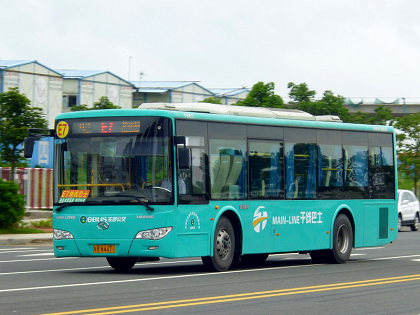
A (clean) change is coming
A positive spinoff of the current investments into manufacturing and industrialization in China has driven down the costs of solar panels. They are embracing solar in areas where pollution is posing a health risk to the people of China.
In densely populated cities, governments are realizing they have to turn the tide on fossil fuel technologies...and quickly. To confront the pollution generated by public transport China has invested in Battery-electric buses (BEBs).
According to Vox, buses accounted for 20% of the air pollution in Shenzhen, China, despite accounting for only 0.5% of the vehicles. Since 2012, all 16,359 buses in Shenzhen have become electric. Not surprisingly, since 2016 the speed at which the electrification has occurred has sped up - as the world calls for cleaner, more renewable forms of powering the world.
The electric buses ensure that 12 million people go from Point A to Point B every day. In 2017 Shenzhen became the world’s first city with an all-electric bus fleet. The city wants the same to happen to their fleet of taxis. This would mean converting 17,000 taxis - their goal is to have this completed by 2020.
China’s growing population with a large number of people living in urban areas highlighted the problem of using diesel-powered buses in the cities. The Chinese government began by swiftly subsidizing the 350,000 BEB (Battery-electric buses) in 2014/2015.
Subsequently, the buses make up 17 percent of China’s bus fleet.
The vehicle manufacturer behind the majority of the e-Buses is a company named BYD. Founder and chairman of BYD told Strait Times:
“China is now facing large-scale urbanisation, coupled with widespread car ownership. Urbanisation causes us to suffer from big city diseases such as traffic congestion and air pollution. BYD uses electric vehicles to help tackle air pollution and Skyrail to solve the problems of traffic congestion. It’s imperative to carry out the electrification of public transport. China is leading the world in this area.”
Ever since China led the charge on using electric buses, the rest of the world is playing catch up. BYD is hoping to send a fleet of buses to Singapore. Dutch company Arriva has also become one of Europe’s chief suppliers of electric Volvo buses.
China is also lobbying to become a member country of the International Solar Alliance. The alliance, formed upon the signing of the Paris Declaration (the agreement to prevent further global warming), is dedicated to further reducing the cost of clean energy technologies. It seems that China is quite serious about reducing the number of fossil fuel technologies they utilize.
Works Cited
Fabricius, Peter. “China's Xi Promises $14.7bn in Investments in South Africa.” Daily Maverick, Daily Maverick, 25 July 2018, www.dailymaverick.co.za/article/2018-07-24-chinas-xi-promises-14-7bn-in-investments-in-south-africa/.
Roberts, David. “China Made Solar Panels Cheap. Now It's Doing the Same for Electric Buses.” Vox, Vox, 17 Apr. 2018, www.vox.com/energy-and-environment/2018/4/17/17239368/china-investment-solar-electric-buses-cost.
StraitsTimesOnline. “Shenzhen Leads the Way in Switch to Electric Buses.” YouTube, YouTube, 26 Jan. 2018, www.youtube.com/watch?v=hcSu92RfT1s.
A lot of infrastructure lies underneath bodies of water. Take, for example, the SEACOM Subsea Cable system that provides Internet infrastructure to the African continent — any maintenance on it is done undersea. Presently, a fleet of ships remain ready to be sent out when a fault occurs, with repairs performed by divers.
Underwater bridge and structure inspections are also vital activities conducted by engineering specialists. Oil rigs and wind turbines are no different — they too need to be studied and maintained underneath water.
In future, underwater infrastructure monitoring, maintenance, and repair will — and probably should — be conducted by waterproof robots.
However, what robots face underneath the ocean surface is often treacherous. There are many factors that they have to deal with when undersea, such as; waves, currents and eddies.
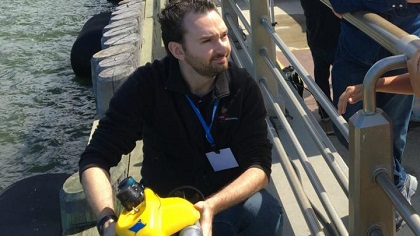
Professor of Mechanical Engineering at Stevens Institute of Technology, Brendan Englot, said robots naturally struggle to get their bearings underwater, which presents a unique challenge for artificial intelligence.
“There are so many difficult disturbances pushing the robot around, and there is often very poor visibility, making it hard to give a vehicle underwater the same situational awareness that a person would have just walking around on the ground or being up in the air,” he said.
Englot and his team have decided that instead of programming robots to achieve outcomes, they will let the machine do the learning instead. They purportedly do this through the use of an algorithm.
The team puts a robot in the water with the task of mapping a particular area. They collect the data and design an algorithm that provides the robot with new situational awareness when it is put underwater again.
Despite the changing underwater environment, the robot does indeed traverse the area more ably. This method is known as ‘reinforcement learning’ — a method that doesn’t rely on finalized mathematical models and Englot’s team concedes there is still room for improvement.
Utilizing sonar technology, the robot emits high frequency noises and calculates its position with reference to the sounds bouncing off surrounding objects. The team of engineers indicates that the robot could be sent for a second pass-by, utilizing a camera as well. They believe that combining the sonar measurements, corroborated by what a camera can see, could lead to some pretty efficient situational awareness for underwater robots.
Englot recently sent a robot to map out a pier in Manhattan.
“We didn’t have a prior model of that pier. We were able to send our robot down and it was able to come back and successfully locate itself throughout the whole mission,” he explained.
The algorithm is still in its early stages and the technology is still developing, but the future looks bright for self-learning robots that can be sent into dangerous underwater situations.
Works Cited
Editor, Ryan Daws. “AI Robots Will Solve Underwater Infrastructure Damage Checks.” AI News, 20 July 2018, www.artificialintelligence-news.com/2018/07/20/ai-robots-underwater-infrastructure/.
Loughran, Jack. “Robots Taught to Navigate Complex Sea Currents with Algorithms.” RSS, 20 July 2018, eandt.theiet.org/content/articles/2018/07/robots-taught-to-navigate-complex-sea-currents-with-algorithms/.
Dear Colleagues
As we all know – at various times one can be absolutely overwhelmed with work and ‘issues’ to deal with. Nothing unusual in the engineering workforce especially with project type work and harsh deadlines to meet. Examples of stress include: you may feel that you can’t cope with yet another email as you have this seemingly unlimited list of tasks to do; the phone is ringing with urgent requests; people are shouting at you for your decision on a crucial project; you have to prepare for an awkward presentation next week… and there are snide comments about possible cost overruns with a project you are managing. And to add insult to injury, you may feel that in your leisure time at home that you should be working to catch up.
It is important to deal with these times effectively so that you can pop out the other side with the load removed from your sagging shoulders.
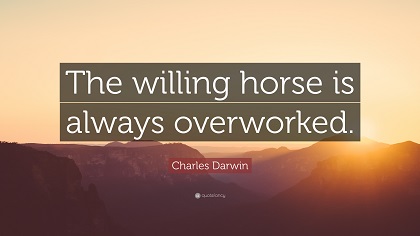
A few strategies are outlined in dealing with this state of affairs.
Apart from taking a deep breath and having a coffee with a ‘chum’ to unload on all the issues; think about doing one of the following:
Give yourself a strong one-to-one talking to
Talk to yourself using language along the following lines:
You can do all the tasks but only one item at a time. Your health and personal well-being is considerably more important than any job. You have overdelivered and worked yourself into the ground for this firm and some personal space is needed for you.
Do a quick audit of your real working time
Often, we find that we tend to overestimate our time spent on working. For example, the number of people that work more than 60 hours per week is very much less than 10% of the workforce. If you believe you work long and outrageous hours, you will tend to believe this and accept this as a fact. So do a reality check and look at your work time for a week and see what it is really in hours and minutes. You may be surprised that it is considerably less than what you had originally assumed.
Avoid doing brief work items (such as emails or writing a quick summary) during your free time supposedly off from the office. We are so connected these days that it is relatively easy to do this by email; but it should be avoided as you then start feeling that you are continually at work and in fact may take longer to deal with these particular items as there is seemingly more time around.
Confirm what people really want
Often, being conscientious, you may bust a gut to do a task quickly for a supposed urgent deadline. Which in reality doesn’t exist. Check with your boss as to when she really needs the job done by. You may find you have more leeway than you first thought. It is best to ‘schedule in’ the tasks so that they fit effectively into your overall work week. Having peaks and troughs isn’t a particularly efficient way of working and puts you under stress.
Delegate lovingly and effectively
You may be reluctant to delegate tasks as you believe only you can do them best. You may have no subordinates. But in today’s professional world it is perfectly acceptable (and indeed, encouraged) to delegate tasks to your co-workers and indeed, your boss with measurable tasks (and deadlines).
What does success in your job really mean?
You may find that you are going to the n’th degree to complete a task when only a short summary is required; rather than a massively detailed analysis. Be wary about putting in too much effort to a task when it may not require this. Perhaps, you are using other driven workers in your office as examples of what you think is required; when this is all unnecessary.
Take your time off Now rather than waiting forever for a gap in the workload
You may be a busy person and the tasks seem to constantly float in keeping you busy at all times. So you will simply have to corral the tasks and give them to others or delay them and warn your boss and peers that you are taking a break. If you have been working flat out and ‘delivering’ they will understand.
This comment by Mokokoma Mokihonoana is also true but one should see it in perspective:“When you truly love what you do, not working is hard work.”
Thanks to the Harvard Business Review for a fascinating article on this topic written by the inimitable Alice Boys.
Yours in engineering learning
Steve
Mackay’s Musings – 14th August’19 #676
The world will be descending on South Africa to compete in a car race, the Sasol Solar Challenge. It is a race that brings a host of engineering disciplines together; a competition which nurtures innovation.
To win, teams ensure their solar cars are running at peak efficiency. They race over 2,500 kilometers (1553 miles), traversing a large swathe of the South African landscape.
2018’s competition will be the biggest Solar Car Challenge yet, with 15 international teams taking part. An encouraging sign for South Africa is that the number of local teams entering is steadily growing. The four South African teams participating in this competition are the Tshwane University of Technology, the North West University, the Central University of Technology and a team named Sonke.
The competition will start in Pretoria on 22 September and finish in Stellenbosch on the 29th of September 2018. This year marks the tenth anniversary of the challenge.
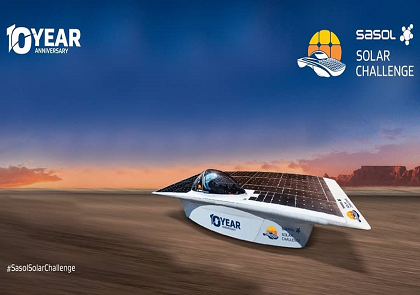
Sasol says the epic event tests ‘the limits of energy innovation’. The logistics of keeping a solar car running is one of the more challenging parts of the competition. One of the difficulties with solar panels is that with the obscuring of one panel, power from them all is lost.
The technical prowess of engineering teams will be realized as all the solar power must be limited to a four meter squared array of solar panels. The competition historically utilized six meters, but the engineering teams now have to show what they are made of with these new parameters.
Mechanical engineers and electrical engineers do a lot of the heavy lifting, but other fields of engineering are also part of the challenge to build the fastest solar powered car.
The Dutch Team, Nuon, is the reigning champion. They are flying down to South Africa to defend their title, but will be up against the South African teams on their home turf.
One of the South African teams the Dutch will be looking out for is North West University (NWU). They recently took part in the Bridgestone World Solar Challenge in 2017. They were the only African team to compete, and finished second in the Adventure Class of the competition. The Adventure Class is non-competitive and is more about the art of building a solar car, but they still managed to pull off a 2nd place win.
In 2014, they came fourth, but set the South African record for the longest distance in a single day. In 2015, they went to Australia and were one of two teams to represent South Africa. They became the first team in Africa to cross the finish line that year and were very proud to have beaten MIT. In 2016 they again participated and came fourth again.
In 2017 NWU, for the first time, used 3D printed parts for their new solar car build. This meant that any hobbyist who had a 3D printer could assist on the project. They are now taking - what they have called the Batmobile – to the Solar Car Challenge which kicks off in Pretoria in September.
The Sasol Solar Challenge director Winstone Jordaan said:
“The Sasol Solar Challenge inspires students to develop new technologies by creating a competitive environment. They contribute to core research on solar technology, including the manufacturing of solar cells, their casing, converters, controllers and electronics. The research done by solar teams has become invaluable to the energy industry.”
Works Cited
“Good Luck to Local Solar Car Teams! Students Prep for 2018 SA Solar Challenge.” Wheels, 19 July 2018, www.wheels24.co.za/News/Gear_and_Tech/good-luck-to-local-solar-car-teams-students-prep-for-2018-sa-solar-challenge-20180719.
“Solar Car.” Bridgestone World Solar Challenge 2017 | Solar Car | Engineering | NWU | North-West University, engineering.nwu.ac.za/solar-car/bridgestone-world-solar-challenge-2017.
Melbourne: word on the street is that it is the education and technology capital of Australia and the most popular Australian study destination for international students.
And there is more: there are murmurings that tech giants are looking to develop a city within greater Melbourne, dubbed the ‘Australian Education City’ — it will mimic the success of that launch-pad of many business start-ups: Silicon Valley, in California. If they get the green light, the Melbourne version is set to cost AU$30 billion.

Melbourne is also becoming known as a city that never sleeps. And it is the fastest growing economy in Australia.
Greville Pabst, the Managing Director of property valuations and advisory company WBP Group told News.com.au:
“Melbourne is a global city. Like all global cities, there is a current trend towards everybody wanting to move to that 24/7 city. Close to amenities, close to transport, close to your favorite restaurant, and coffee. It’s all about lifestyle.”
The Engineering Institute of Technology (EIT) is poised to take advantage of this exciting city – it is set to open the doors to its Melbourne campus. EIT, in partnership with the Universal Institute of Technology (UIT), will share UIT’s beautiful premises in the heart of Melbourne’s CBD.
From February 2019, EIT invites students from all over the world to spend two years in Melbourne, Australia, to study towards their Master of Engineering (Industrial Automation).

Industrial Automation is a vital and growing discipline of engineering because it is actively advancing the Fourth Industrial Revolution; it has its eye squarely set on the industries of the future.
The Melbourne campus is the second EIT campus to open; the Perth facility opened in February 2018.

Melbourne will host the post-graduate degree to begin with, whereas those students attending EIT in Perth have access to four Bachelor of Science Degrees - in a range of engineering disciplines - and the Master of Engineering (Industrial Automation).
The Fourth Industrial Revolution
Every day technology is replacing the repetitive tasks traditionally accomplished by humans: this presents a unique challenge to us all. We need to both broaden our skills or indeed reskill to ensure we remain relevant and useful within our changing work environments. Those students and graduates involved in the technologies driving the changes are particularly well-placed.
EIT is one of the institute’s readying students for careers in those technologies that define the Fourth Industrial Revolution. EIT equips learners for an industrial environment ruled by artificially-intelligent industrial robots, self-driving vehicles and the myriad of sensors facilitating the Internet of Things.
With a Masters in Industrial Automation, students will be well prepared to form part of the global economy that is being defined by the automated systems that efficiently run industry all around the world.
Culture and Sports
But...back to the lifestyle of leisure! Melbourne is sports-crazed. The people of Melbourne are particularly fond of Australian Rules Football (AFL). The AFL’s finals are held in Melbourne every year at the Melbourne Cricket Ground – yep they also love their cricket!
During cricket season the Melbourne Cricket Ground proves very popular. And a famous horse race – the Melbourne Cup - is celebrated each year in November with all Victorians given the day off for the event!
Melbourne also has a large arts and culture vibe that adds color to the city. As business and technology is woven into the fabric of Melbourne, the well-established art scene will continue to provide the depth and vibrancy that marks the city.
There are fewer rough and tumble, hard-hat wearing engineers in the industry - as it becomes increasingly technology-based. But whichever hat we engineers wear, when the ‘Arts’ creep into engineering we can see it complementing our skills.
The Dean of Engineering at EIT, Steve Mackay, wrote in a recent blog entitled, ‘Originally from the Wild West, we engineers now need to be attuned to style and culture’, wrote:
“Some of my engineering colleagues, those who are eminently cultured, may be a little piqued at the idea that they are Wild West types. But I do remember being mildly surprised (when working on commissioning a power station in the middle of the Australian outback) that the grubbiest and seemingly coarsest technician on site ended up hosting a spectacular black tie, wine-appreciation night. He was the part owner of a famous vineyard with a magnificent art gallery. He had hit hard times and needed to return to ply his craft (engineering) to support his artistic alter ego.”
Interested in studying with EIT on-campus in Melbourne? Please send your enquiry to
Works Cited
“Australia's #1 News Site.” NewsComAu, www.news.com.au/.https://www.news.com.au/national/victoria/tech-giants-push-for-piece-of-30bn-super-city-in-east-werribee/news-story/51e77278242514b23567bf6b9e00050c
As the world moves to more renewable methods of generating electricity and cities become smarter, smart solutions to creating energy through innovation are going to be necessary.
A video featured on Interesting Engineering’s Telegram page featured a new vertical axis wind turbine that promises to capture wind specifically generated near inner cities and coastlines around the world. The turbine in question is the ENLIL vertical axis wind turbine, also known as a VAWT.
The engineering company behind the design of the VAWT is Devecitech. The turbine can be placed onshore ocean-side and capture some of the winds blowing from the sea landward, but there is another area of untapped potential these turbines could fit into: roads.
The movement of vehicles creates air that could power the turbine. Fast and continuous flow of traffic on roads can create a perfect environment for the turbine. Wind generated from moving vehicles and natural winds on highways will keep the turbine running. Moreover, the solar panels positioned atop the turbine capture more electricity.
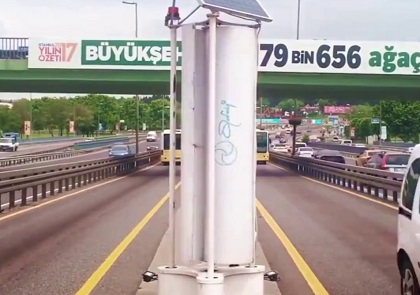
The engineers attached to the project say that the turbine is capable of generating 1KW/h every day - the equivalent of powering two households.
The VAWT also has built in sensors that will measure the carbon footprint, the city’s temperature, humidity, and more. Meaning, the turbine can be a good addition to the interconnected smart city of the future. All of the data and analytics will be accessible via an app.
The turbine can help create electricity for the road infrastructure that requires electricity, such as: traffic monitoring systems, toll gates, toll gantries and the streetlights.
Effective?
The Chinese are questioning the benefits of vertical axis wind turbines in their cities.
Research company, IDTechEx Research, has performed a study on ‘Electrically Smart Roads 2018-2028’. They report that VAWT setups are still at too high a price point and foresee that solar will be preferable as photovoltaic cell prices continue to drop.
Raghu Das, CEO of IDTechEx says:
“The price gap between the ubiquitous polycrystalline silicon solar cell and the much more efficient single crystal silicon is narrowing. That means the road furniture such as bus shelters and smart gantries will likely go for more solar than adding wind power in many cases because wind power needs a lot of maintenance and its price is not dropping as rapidly.”
Das believes that the H shaped VAWTs are also too loud for residential areas. The vibration the turbines undergo generates a noise.
Dr Hiromichi Akimoto, a Professor of Engineering at Osaka University Center for the Advancement of Research and Education Exchange Networks in Asia, taking to a question and answer website Quora, explains why VAWTs have not been historically utilized despite the technology being available:
“Getting high efficiency of VAWT in a small scale is difficult. It is because the performance of VAWT is very sensitive to the lift/drag ratio of a blade and it is not good in the low Reynolds number condition of small applications. Another factor is its peaky power curve (power vs tip-speed ratio). Because of its narrow peak, keeping the optimum point is difficult for a small VAWT in an urban area where fluctuation of wind is significant.”
Consequently, most VAWT setups are just futuristic experimentations for now. More research and development is going into VAWT all the time; the more commercially known, utility scale, HAWT (Horizontal Axis Wind Turbine) will remain what most people usually think of when thinking about wind power.
Works Cited
“Enlil Vertical Axis Wind Turbine.” YouTube, YouTube, 29 May 2018, www.youtube.com/watch?v=MjgIYJ_9aIM.
“Top 16 Telegram Channels for Tech and Engineering Enthusiasts.” Interesting Engineering, 2 May 2018, interestingengineering.com/top-16-telegram-channels-for-tech-and-engineering-enthusiasts.
“Why aren’t Vertical-Axis Wind Turbines more popular?
Those kids with their laptops could just change the world!
Millennials are the first generation to have the best of technology at their fingertips. Some are using it to tackle projects in a world of aging and often inadequate infrastructure.
With climate change overwhelming drainage systems all over the world, for instance, a downpour can lead to flooding. South Africa, Japan, and the United States have recently seen flooding in areas with infrastructure that was designed for more moderate weather patterns. Storm water drains simply can’t keep up with the volume of water in a climate worsened by fossil fuel emissions and general climate change.
The Department of Civil Engineering at McMaster University in Canada in 2015 released a report in the Journal of Hydrology. Author James D. Miller wrote:
“A number of future climate projections indicate a likelihood of increased magnitude and frequency of hydrological extremes for many regions around the world. The urban storm-water management infrastructures are designed to mitigate the effect of extreme hydrological events. Changes in extreme rainfall events will have a significant implication on the design of stormwater management infrastructures.”
Startups, millennials and entrepreneurship
Brazil is a country facing such challenges. And even if there was a solution, the country would not be able to afford to implement it.
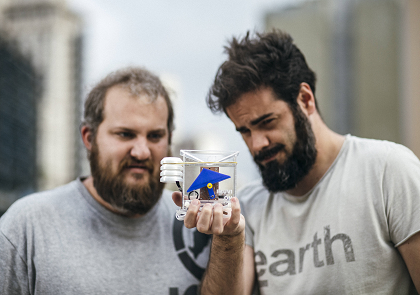
Enter two engineers based in São Paolo, Brazil: Diogo Tolezano and Pedro Godoy. They have initiated a startup called Pluvi.On. They have developed a weatherproof tool that can measure rain and predict if floods are expected — a type of rain gauge called a Pluvi. If a flood is forecast, preventative measures can be taken or warnings can be given, based on the data recorded by the device.
They outlined the dire situation in Brazil and provided some insight into their own motivation:
“….today approximately 30 million Brazilians are directly impacted by floods every year. And there is a projection…. by 2030 a loss of US$4 billion...lost homes, furniture, vehicles…”
The startup is being assisted financially through the Red Bull Basement hacker residency. The residency develops projects that offer solutions to issues in urban spaces. They assist with spaces to create, mentorships and more.
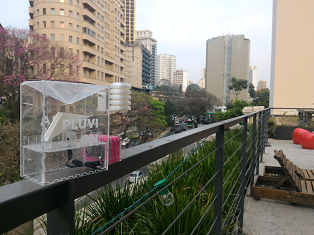
Their foresight and funding of projects for engineering startups will help empower other millennials endeavoring to create technologies that could greatly help the globe.
Tolezano and Godoy were determined to act rather than wait for their government to do something. They decided to develop the technology themselves and get extra backing from Red Bull to implement the technology and test it out. The engineers told Red Bull:
“When we look at the impact of floods, it really is a relevant problem. We wanted to use our knowledge to make a positive impact on cities. If we don’t get our hands dirty, it’ll take a long time before anything happens.”
They developed the rain gauge and opened it up to the public as an open source project. Now members of the public can find all the information necessary to create a Pluvi of their own.
The gauge is made up of a plastic box that allows rain in. The water goes into a plastic bucket that measures the amount of rain coming down. Using an ESP chip inside the box, data is generated and sent to the cloud, ready to be perused. The tilts of the plastic bucket inside the enclosure are measured, the number that is generated assists with the flood predictions.
In the two months of the Red Bull residency, they built the enclosure, put in a data integration platform, and ensured that they could get the data forwarded to the people who needed it most.
When their first prototype debuted the entire setup cost US$190. This was subsequently reduced to US$130. Development of the fourth prototype only cost US$50. Thanks to these inventive, proactive and community-spirited men, a network of 20 gauges around the city are generating and uploading data.
Being an entrepreneurial engineer is within reach. Starting with very little, as Tolezano and Godoy have shown, improvements to one’s immediate community are possible.
Diogo Tolezano said:
“The idea is to have real time information. So, as soon as the rain starts we can identify its behaviors and patterns, and then, mainly according to its intensity, we can let the population know with some time in advance.”
Works Cited
Red Bull, www.redbull.com/za-en/projects/red-bull-basement.
“The Impacts of Urbanisation and Climate Change on Urban Flooding and Urban Water Quality: A Review of the Evidence Concerning the United Kingdom.” Egyptian Journal of Medical Human Genetics, Elsevier, 8 July 2017, www.sciencedirect.com/science/article/pii/S2214581817300435.
Dear Colleagues
I believe most of us get to some stage in our lives where you start asking the inevitable questions such as: am I doing the right thing; am I in the right company or career; am I progressing somewhere; am I going to be financially secure when I am older; isn’t this work somewhat predictable and boring; should I be doing something more exciting and rewarding…. ?
This is where you are seeking more meaning, fulfilment and satisfaction in your career (and indeed, life) against the backdrop of the usual financial pressures of paying off a home, car and putting the kids through (private) school and trying to afford an upcoming entertaining vacation. A veritable vice grip of constraints. And naturally, in keeping your family relationships on an even happy keel.
 This questioning period happens especially in mid life. You have realized that you aren’t immortal – time is moving on, the rip roaring twenties are a memory and you can see where you are heading with your career with some uneasiness. Your income and career track is pretty predictable and things aren’t going to suddenly change. There is no magic unpredictability where you suddenly win Lotto ahead.
This questioning period happens especially in mid life. You have realized that you aren’t immortal – time is moving on, the rip roaring twenties are a memory and you can see where you are heading with your career with some uneasiness. Your income and career track is pretty predictable and things aren’t going to suddenly change. There is no magic unpredictability where you suddenly win Lotto ahead.
It is important that you don’t ignore these feelings and the associated questions you have. But it is also vital to try and do anything to deal with this situation in a rational and methodical manner. I have come across many engineering professionals who have suddenly ‘chucked it all in’ citing extreme initial happiness with their decision and then a year down the track have realized that they are in a worse predicament because of their knee jerk reaction. And their age has now made it difficult to re-establish their financial stability.
A few suggestions
- The first thing is to carefully reflect on what is making you unhappy or unsettled. It may be some minor issue in the job which you can easily deal with. Or it may be something more intractable like a job which is a dead end, or highly stressful which will require more substantial steps to deal with. Bear in mind that your feelings are perfectly natural and experienced by many (most) of your peers.
- The second item is to consider small incremental changes to your career as this is the lowest risk approach. You may be able to engage in a new engineering project/ a new product line or join a new initiative of the company – for example – in launching a new product or changing your offices from Raleigh to London. Alternatively, you may consider reducing your hours so that you only work four days a week and can focus on your burgeoning hobby or charitable work on this day. Another strategy to follow is to closely examine the organisation you work for and see whether it is missing something where you can add enormous value with your current strengths such as in product development or working with people. Think laterally and don’t always think of promotion but in moving sideways as a possible solution.
These small changes could have a huge ongoing positive impact on your life and engineering career. Whatever you do; always consider improving your learning experience – whether it be through a formal course or a project you take on which challenges you and draws on your strengths and interests and improves your knowledge and skills. And always build in a strong focus on finding meaning in what you do.
Finally, you may find that you can seek meaning and fulfilment easily but not in the obvious place such as directly in your career but outside your job with such items as charitable endeavours/setting up a new musical/craft or food festival for your community. This means you continue working as you have been but derive more satisfaction from these other external activities.
- Big Changes. You may find the previous incremental suggestions not suitable and you may need to engage in a greater change such as a total career or life style change. If you decide to embark on this ensure you can count on massive and sustained support from your partner and family over a considerable period of time. And visualise deeply what this change will make you feel like in a year or two (from when you make it). On deeper reflection, you may find it has no impact on your current feelings apart from making you more frustrated. And other changes are thus required.
Finally
Whatever you do – don’t sit around hoping for things to change. They won’t change of their own volition; so a careful consideration of how to move forward is required. However, don’t do something precipitate in suddenly changing without carefully considering what you are seeking. As you may end up in a far worse position and put yourself and your family in a bad place.
Thanks to Rebecca Knight of the Harvard Business Review coupled with Prof Gianpiero Petriglieri’s (Insead) wise commentary for a thought provoking discussion.
Remember as some wise pundit (not Winston Churchill) remarked: "Never let a good crisis go to waste."
Yours in engineering learning
Steve
Mackay’s Musings – 7th August’19 #675
125, 273 readers – www.idc-online.com/blogs/
BP’s Kwinana Oil Refinery in Western Australia is the largest refinery in the country, producing 8300 megalitres of oil per year. Crude oil is shipped in from the Middle East, West Africa, New Zealand, Indonesia and north-west Australia. This refinery provides all the fuel to transportation vehicles in Perth and the South West — including petrol, diesel and jet fuel. Fuel is also shipped to South Australia and Tasmania.
The Anglo-Iranian Oil Company was looking for another location for a refinery after their Abadan refinery was closed in 1951. After a restructuring of the company, they decided to move away from being dependent on a single refinery and instead decided to construct a spread of refineries internationally. One of the places they decided to build a refinery was in Australia.

The site of the refinery was chosen after the company became dejected when they couldn’t find a suitable site on the east coast. Sir Russell Dumas and David Brand from the Works for Western Australian Government travelled to Melbourne to meet with the Anglo-Iranian delegation, after Dumas realised the Cockburn Sound was a suitable location. Given it had a harbour facility, plenty of available land and a calm climate, the delegates headed to Perth to visit the site. The decision was finalised in January 1952 and construction began in the following year.
In December 1954, the Anglo-Iranian Oil Company’s name was changed to the British Petroleum (BP) Company, after vote by shareholders.
Finished in 1955, this project was considered significant by Engineers Australia because of the positive economic and social impact it had on Western Australia. One of these impacts was the development of a township a few kilometres inland of the refinery to accommodate workers on the site. The State Housing Commission built 1000 houses in the area over a three-year period, creating a community in the area.
This refinery was the first major industrial plant established in Kwinana, and was the catalyst for the area’s substantial growth. Not only did it lead to the establishment of the industrial area, but also to the development of the harbour at Cockburn Sound.
The refinery has signed an agreement with the Western Australian Government to continue operating until 2050.
Robots the size of a human egg cell, with the ability to sense their environment, have been created by researchers at the Massachusetts Institute of Technology (MIT). It’s hoped that they can eventually be used to monitor pipelines in the oil and gas industry to check for leaks and other issues. It’s also possible that they could be used for diagnostic purposes, by passing through the digestive track to check for inflammation or other signs of disease.
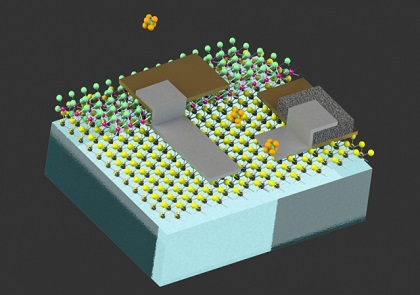 These robots consist of tiny electronic circuits made from two-dimensional materials, which piggyback on miniscule particles, known as colloids. These insoluble particles can be anywhere from one millionth to one billionth of a metre across. Their tiny size enables them to stay suspended indefinitely in liquid or air.
These robots consist of tiny electronic circuits made from two-dimensional materials, which piggyback on miniscule particles, known as colloids. These insoluble particles can be anywhere from one millionth to one billionth of a metre across. Their tiny size enables them to stay suspended indefinitely in liquid or air.
Senior author of the study Michael Strano said the research team had wanted to find a way to graft complete electronic circuits onto colloidal particles.
“Colloids can access environments and travel in ways that other materials can’t,” he said.
While they may be the smallest robots ever, they have the ability to store data and complete computational tasks. They are self-powered by a simple photodiode, which provides them with enough electricity to function. This means they don’t require an internal battery or an external power source.
Currently, leaks and other issues within pipelines are found when crews physically drive along them using expensive equipment. In theory, these new robots could be inserted into one end of a pipeline, carried along with the flow, and then removed at the other end. During that time, they would have recorded the conditions they encountered, such as contaminants or the location of problem areas.
Right now the devices don’t have a timing circuit with the ability to indicate the location of the data readings. However, this is something the research team is working on.
Other research teams have been working on creating similar robots; however, Strano said their focus is on developing ways to control movement. For example, may teams have worked on creating tail-like flagellae; inspired by the way some microbial organisms propel themselves. Strano said he believes this isn’t the best approach as these movement systems are mostly used for local-scale positioning rather than for significant movement. He suggested it’s more important to make these robots functional rather than mobile.
Dear Colleagues
When I am discussing a critical issue with a colleague and confirming that he has ‘got it and agrees with my sentiments’, I also look carefully at his body language and I am never disappointed. Arms folded tightly, a quizzical frown and avoiding a direct glance are sure signals that what I have said hasn’t gone down well and disagreement is in the air.
You need to study body language – that interesting combination of facial and eye movements and limbs - perhaps overlaced with the tone of your voice. Apparently, only 10% of the meaning transferred between two people talking is via words – the rest – a huge 90% is through that ungainly combination of tone of voice and body language.
 How to Use Body Language more Effectively
How to Use Body Language more Effectively
Typical elements of body language include:
Closed Body Posture. This means the person is hunched over, arms tightly wrapped around the body, legs crossed, hands perhaps hidden stuck in pockets and eyes looking everywhere but at you. Disagreement and unhappiness squeaks from every pore of this person.
Open Welcoming Body Posture. Arms and hands are open and facing you, face is friendly, eyes are twinkling and perhaps legs are sprawled open. This person is happy, positive and agreeing with you - wanting to work with you and contribute.
Eyes are everything. If the eyes are narrowed, brows are furrowed or eyes are blinking rapidly and the individual is looking away from you there may be some unhappy issues that this person has with you.
Touching one’s face or head. If someone is reflectively tweaking their ear lobe, they may be in a reflective mode. If they are touching their face repeatedly, they may be concerned about what you have just told them.
Smiling. There is no doubt when a person is genuinely smiling. Her whole face joins in with the smile. However, when the face is rigid and only the lips tweak cautiously with a slight smile, you can be sure that this person is not happy or not engaged in the smile at all. One can get a good idea of what this useless smile is like when you watch many politicians at work who often make comments which aren’t sincere and the edges of their mouth tweak in a token smile. Don’t trust this person’s words.
Finally….
Most of the discussion above has been when you have to interpret someone’s body language. However, you also need to be keenly aware of your own body language otherwise you may give the game away. When you are giving an enthusiastic pep talk to a group and want to instill confidence in them as to your intentions – you have to open your hands, arms and ensure you grin enthusiastically and infectiously (using your whole face).
Peter Drucker makes the vital comment: The most important thing in communication is hearing what isn't said.
Thanks Susan de la Vergne of the IEEE for a very useful discussion on body language.
Yours in engineering learning
Steve
Mackay’s Musings – 31st July’19 #674
125, 273 readers – www.idc-online.com/blogs/
If you’re brave enough to face the cold in the early hours of Saturday morning, you’ll be able to witness the longest lunar eclipse of the 21st Century.
The moon will be joined by Mars, which will be at its brightest and closest to Earth in 15 years according to Dr Tanya Hill, an astronomer from Melbourne Planetarium.
“The reason that Mars can vary in brightness so much is because it’s our neighbour in space and it follows quite an elliptical orbit. Throughout 2017, Mars was fairly dull as it was on the opposite side of the Sun to Earth, and therefore at its most distant,” she said.
“But even at each opposition the distance between Earth and Mars can vary by almost 50 million km, because of the two planets’ elliptical orbits. 2018 is definitely one of the best.”

People in Western Australia will be lucky enough to witness the full eclipse.
“Western Australia will be the only state to catch the entire eclipse. It will begin with the Moon high in the northwest and end with the Moon low to the western horizon,” she said.
“For the rest of Australia, the eclipse will begin with the Moon in the western sky and the Moon will set as the eclipse progresses. As the Moon sets, the Sun will rise so the later part of the eclipse will occur against the brightening dawn sky.”
It’s expected to begin at 2:24am Australian Western Standard Time and to end at 6:19am on July 28. The period of totality refers to the Earth’s shadow being directly across the moon, making it appear at its reddest. Dr Hill says this period is expected to last exactly 1 hour, 42 minutes and 57 seconds. This is just 4 minutes shorter than the longest possible eclipse.
“Three things have come together to make this possible,” said Dr Hill.
“First, and most importantly, this eclipse will see the Moon move through the centre of Earth’s shadow, making for a long and deep eclipse.
“Second, the eclipse occurs during an “apogee” Moon, when the Moon is at its most distant from Earth.
“For those who remember Kepler’s Second Law, being at its most distant means that the Moon is moving at its slowest. Therefore, it will spend 5-10 minutes longer in Earth’s shadow compared with a perigee Moon, when the Moon is at its closest approach to Earth and moving more rapidly.
“Finally, an extra few minutes are picked up because this eclipse is occurring near aphelion, which is when Earth is furthest from the Sun and occurs in early July.”
Across the world, everyone who is on the night side of the world will experience the eclipse at the same time. Central Asia and Eastern Africa will have full visibility throughout the event. Western Africa, Eastern Asia, South America and Europe will have partial visibility. The only places that won’t be able to see it are North America and the Arctic.
It’s completely safe to watch a lunar eclipse and no special equipment is required, according to Dr Hill.
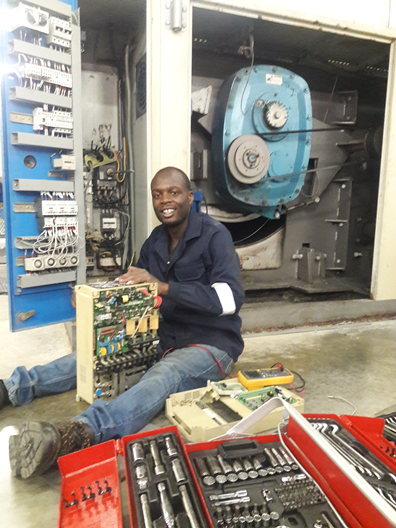
Tatenda Nherera is an EIT graduate, having obtained his Advanced Diploma of Electrical and Instrumentation (E&I) Engineering for Oil and Gas Facilities (DEI). He grew up in Gweru, Zimbabwe, but now lives in South Africa.
I asked him when the engineering bug bit. He believes it was when he was just 10 years old: he would pick through the components of faulty and abandoned radios and TVs, salvage selected parts and then repurpose them to create something else. He then took it a step further and began varying speeds on small DC motors – he became hooked!
He completed his Ordinary Level in 2006. After that, in 2008, he enrolled at Gweru Polytechnic College as an Electrical Power student. He excelled in all six of his subjects - most of all, in mathematics and science. He became an intern at Cargill Cotton Company, at their Ginnery, and continued to tinker with circuits, designing them for different scenarios.
At an agricultural expo in 2009, Tatenda showed off a traffic light system that he had designed and built. He received first prize in the Science and Technology section. It was awarded by the Deputy Prime Minister and a Professor of Robotics, Arthur Mutambara.
In 2015 he enrolled at the Engineering Institute of Technology (EIT) which allowed him to continue working while he studied. He says:
“Through EIT’s cutting edge presentation and delivery of materials and labs my maintenance, diagnostic and fault finding approach significantly improved. My improved technical report writing skills helped a lot in conveying necessary messages through motivations, recommendations and methodologies which were found to be technically sound and informative.”
Apart from his involvement in a range of projects in mining, textile and food industries, Tatenda works for Blue Aqua Projects, a Facilities Management Company with vast experience in water care facilities, laundry, kitchen, steam reticulation equipment. It is contracted by the Eastern Cape Department of Health to service, repair, maintain and install equipment. He uses his expertise in electrical and instrumentation engineering to service, maintain and repair key industrial scale laundry and kitchen machinery in a number of cities in the province, including Port Elizabeth, East London, Mthatha and Butterworth.
Tatenda believes that improving efficiencies in industrial laundry and kitchen equipment is of vital importance to a range of businesses (apart from health facilities) around the world. Tatenda comments that technological advancements are occurring at a rapid pace:
"New control and drive systems are being introduced to old and discontinued laundry machines. This approach moved the Eastern Cape health system to another level. The PLC (Programmable Logic Controllers) controlled systems, blended with HMIs (Human Machine Interfaces), brought another ergonomic feel to operators, it has enhanced production and saves energy. Old gearboxes and extra-big motors - with multiple motor drives for different speeds and torque - have been substituted with variable speed drives and better-sized single motors, to very good effect.”
Candidate Technician
Tatenda received his DEI qualification, an Australian accredited qualification, from EIT in October 2017. He filed an application with the Engineering Council of South Africa (ECSA) to be professionally recognized in South Africa.
After some time, despite not having a South African Qualifications Authority (SAQA) certificate, the positive news eventually came. ECSA recognized him as a Candidate Technician. This showed that, together with his work experience, EIT’s online qualification was the vehicle which gained him South African status within engineering. It was particularly stressful for Tatenda. He explains:
“I never thought a positive outcome was going to be obtained from this submission, considering that I made this application without a SAQA certificate. (It is normal practice that all foreign qualifications to be channeled through SAQA - for evaluation and grading - before other South African organizations/bodies consider and accept them). I got my SAQA outcome a month after receiving ECSA certification.”
Tatenda says that studying through EIT provided him with a wide network of students and lecturers from all over the world. He notes that attending classes from anywhere was a pleasure - he could take a break as needed and could even learn from his bedroom.
To strengthen his skills further, says Tatenda, he is currently studying a Bachelor of Science in Industrial Automation through EIT.
“I will remain employed and still study part time as I did on my previous course. The studies are giving me more meaningful skills, and contributing to the African society, where Engineering skills like mine are very scarce.”
Before the submarine telegraph cable was first laid between Java and Port Darwin in 1872, Australia’s only communication with the outside world happened via letter carried by ships from overseas. This meant it took months for any news to arrive. 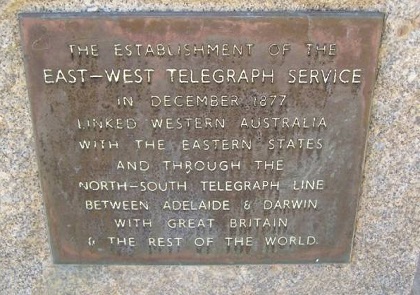
Australia was behind the rest of the world when it came to the installation of the telegraph line. The first telegraph message in the world was sent via Morse code in 1844; however the first line in Australia wasn’t constructed until 1854. This linked Melbourne to Victorian port Williamstown and was extended to Geelong later that year. Lines continued to be built throughout the state until there was a widespread network by 1857.
Telegraph lines connected both South Australia and New South Wales to Victoria by 1858. Tasmania was connected to Victoria in 1859. In 1861, a line was constructed to link Queensland to New South Wales, which meant the eastern states were all in communication with each other. The Overland Telegraph was completed in 1872 and linked the eastern states to Java via Darwin, which allowed them to receive international news.
Construction of the East-West Telegraph Line
Western Australia’s first telegraph line connected Perth and Fremantle in 1869. Often mail steamers would first arrive at the port in Albany, so a conveyance link to Perth made a lot of commercial sense. This line was completed in 1872. However, the state wasn’t connected to the rest of the country until the East-West Telegraph was constructed in 1877.
The idea of a line between South Australia and Western Australia was discussed as early as 1860, however no decisions were made. In 1873, the South Australian government received a proposal from the Western Australian government. Originally the proposal was rejected as South Australia didn’t feel they were getting enough out of the deal to allocate funds to it. The next year it was accepted by Charles Todd, their Superintendent of Telegraphs, as he decided it was necessary to their trade and commerce, navigation and defence. Both states passed bills approving the cost of the telegraph line’s construction.
The line was originally going to stretch from Eucla in South Australia to Albany in Western Australia. In 1866, a telegraph office was established at Port Augusta, as this was a staging post for the Overland Telegraph. It was the decided the East-West Telegraph line would stretch the 3310 km from Port Augusta to Albany.
This would be the toughest public works the small Western Australian colony had ever carried out, particularly because one third of their section had no European inhabitants. Therefore, a lot of the terrain was unknown. The construction was split into multiple sections, to make the project more manageable. The poles were made from Jarrah wood rather than iron as it was less likely to corrode and require frequent maintenance.
In January 1875 the first pole was planted in Albany. In August of that same year, the first pole was planted in Port Augusta. The South Australian section of port Augusta to Eucla was completed in July 1877 — the Western Australian section was completed that December, and the first telegraph message was received in Perth.
Engineers Australia considers this project to be significant due to the harsh conditions faced during construction; given it was completed using commercially available technology rather than innovative techniques. It was also important as a commercial link when the gold rush began in the 1890s. In fact in 1896 the link was extended to reach Coolgardie which was part of the goldfields. It was also an integral part of laying the foundation for Federation in Australia.
The Canning Dam is a popular tourist attraction in Perth. The stunning scenery makes it the perfect picnic spot, and there are a number of different walks visitors can complete in the area. These range from short strolls, to longer hikes — look out for the signs that explain the historical significance of the area. There is even a wide path along the dam wall, which means you can take in the view of water on one side and dry land on the other. Engineers Australia have marked this feat of civil engineering as historically important, as it solved the major water shortages the Perth metropolitan area was suffering from in the late 1800s and early 1900s. It has also been recognised by the Heritage Council of WA for its innovation and technical excellence.
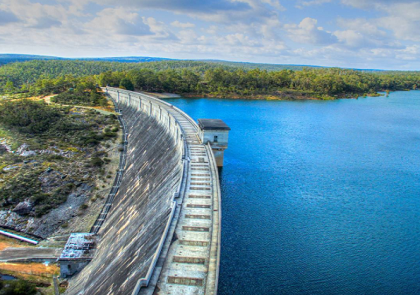
Historical Significance of the Dam
The Canning Dam was the primary water supply to the Perth metropolitan area, from its completion in 1940 until 1961 — the Serpentine Dam was built to keep up with the population growth. It currently supplies approximately 20% of the water to the current metropolitan area.
The City of Perth Waterworks Company launched the first reticulated water supply in October 1891. However, this was quickly overshadowed by angry ratepayers and members of the Perth City Council, who were upset about the company’s handling of reticulation and house connections.
There were also a number of deeper issues, such as rapid population growth due to the gold rush, which had already rendered the scheme inadequate. It was also only relevant to Perth; with Midland Junction, Claremont and Fremantle not receiving service for another 15 years. This meant much of the population was excluded from the water supply. At the same time, there was an outbreak of typhoid and waste disposal was considered basic and underdeveloped.
The Government had made the water company the responsibility of local council, which meant it was originally reluctant to become involved in any issues. However, by 1986 the Government had resorted to setting up the Metropolitan Water Works Board. This Board first proposed the construction of a dam on the Canning River in 1897, however funds were not allocated to the project.
In 1924, a pipehead dam was built near Araluen and used the Canning River as its water source. This was launched by Premier Sir James Mitchell, to satisfy the constant water shortages in Perth. However, the water supply was still insufficient for the population and the quality was poor.
In the meantime, several reports from inquiries had recommended the construction of a dam on the Canning River. Despite this, and multiple droughts, the Government didn’t allocate any funds to the project until the early 1930s.
Construction on the dam began in 1933 and it was completed in 1940. It’s considered to be of social significance for a number of reasons. Firstly, it provided a number of employment opportunities during the Depression, which helped the labour market recover. Since it was so labour intensive, many people in Perth were associated with it and formed a community. It has also been an enjoyable day trip for generations of Australians, who have enjoyed the surrounding landscapes.
It has also been recognised for its aesthetic structural design, given it had minimal environmental impact and features a curved design which demonstrated technical excellence. On top of this, it is still mainly in its original form. It was the first instance new concrete batching technology in Western Australia and was a benchmark for hydraulic technology at the time.
Global Engineering organizations have created cross-cultural spaces wherein all races, religions, and personality types coexist. And with more first world countries looking to take their engineering education and training beyond their borders, the meeting of cultures will increasingly occur. Today it doesn’t matter who you are or where you’re from, if you have the knack for engineering you can be educated and trained up to a global spec.
As early as the turn of the millennium, the year 2000, the Auckland University of Technology’s Faculty of Science and Engineering foresaw the trend; a mix of cultures, working together and creating the kinds of technologies we have observed over the last 18 years.

Professor John Buckeridge, from the university’s Faculty of Science and Engineering, wrote a report entitled, ‘The Y2K Imperative: The Globalisation of Engineering Education’. It highlights that with the establishment of the Washington Accord, in 1988, real multi-cultural Engineering began. The Accord was an agreement signed by the professional engineering bodies of Australia, Canada, Eire, Great Britain, New Zealand and the United States of America. Not long afterwards, China and South Africa became signatories.
Buckeridge said that the signing of the Accord began a shift in the Engineering industry. He writes:
“The net result has been a partial inter-nationalisation of the profession, such that appropriately qualified members of one Professional Engineering Institution be admitted, upon application, to the relevant grade of membership of another Institution within the Accord without further examination or interview.”
Since then multiculturalism in Engineering has burgeoned. Now the world is quite literally the prospective Engineer’s oyster. Globally, students can study an online course, get a globally recognized qualification and work in many countries or thrive in their own. The mobile engineer may have to face some cultural challenges, but nothing that cannot be turned into a positive if he/she is well-prepared.
Cultural literacy
It is not unusual to see engineers travelling internationally for work; in fact some do so with such regularity that they become ‘culturally literate’.
Someone who understands cultural literacy, because of the research she has conducted into it, is American author, Professor Erin Meyer. She has written a book entitled, ‘The Culture Map: Breaking through the Invisible Boundaries of Global Business’. In a lecture on the topic she reflected on some of her cultural missteps doing business around the world. She said:
“I was on a trip to Japan with a Japanese colleague. I gave a short presentation to a group of Japanese participants, and at the end of the presentation I asked them if they had any questions. No one raised a hand so I went to sit down.”
Erin’s Japanese colleague whispered to her that there were questions and proceeded to single out one person who did indeed ask a question.
Perplexed, Erin asked her colleague to explain. Apparently it was to do with “how bright their eyes were.”
“In Japan, we don’t make as much direct eye contact as you do in the West. So, when you ask people if they have any questions, most people are not looking at you directly. But, a few people in the audience are looking directly at you, and their eyes are bright. And that indicates that they would be comfortable with you calling on them.”
The Japanese describe someone’s shortcomings in social interactions as ‘Kuuki Yomenai’, or ‘KY’. The term is used to describe someone who is unable to read a situation or unable to pick up the mood of a conversation. Thus, a Westerner may be guilty of not - as the Japanese put it - ‘reading the air’ well enough.
In her book, Erin has designed a pattern of dealing with different cultures in different multicultural spaces. She said:
“We divided culture up into different types of behaviors and we started looking at things like, how is trust built in different parts of the world, how do we make decisions differently in different parts of the world, and we saw that we were able to come up with patterns for how countries or cultures felt differently on those scales.”
Engineers, and students of engineering, should take advantage of every opportunity to interact with people who are culturally diverse. Be open to their differences and be prepared to learn their customs. This is an approach that will go a long way to ensuring their success as engineers of the world.
Works Cited
Google Scholar Citations, Google, scholar.google.co.za/scholar_url?url=https://www.researchgate.net/profile/John_Buckeridge/publication/237128581_A_Y2K_Imperative_the_Globalisation_of_Engineering_Education/links/02e7e535878d81fb51000000.pdf&hl=en&sa=X&scisig=AAGBfm1vN_1l-DwiGED2DM_oQmDMxSh3-w&nossl=1&oi=scholarr.
“Business Speaker Erin Meyer: How Cultural Differences Affect Business.” YouTube, 10 Dec. 2014, youtu.be/zQvqDv4vbEg.
Ebenezer Opoku-Yeboah is an engineering enthusiast working in the mining industry. He is a registered engineering superintendent with Ghana Chamber of Mines. He obtained his sectional engineers certification in April 2011, but has twenty years of experience in both mobile and fixed plants, specifically focusing on maintenance and installation works.
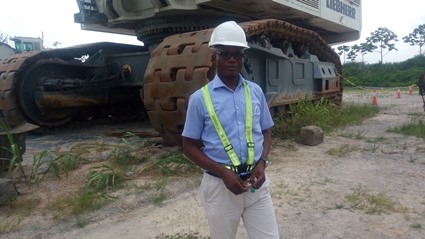 He is presently employed by Gold Field Ghana Tarkwa as Chief Engineer and is presiding over Maintenance and Projects. He has been with them for six years.
He is presently employed by Gold Field Ghana Tarkwa as Chief Engineer and is presiding over Maintenance and Projects. He has been with them for six years.

Volkswagen came, saw, and conquered. The Volkswagen ID R has broken the record for the time it takes an electric vehicle to climb a hill. It is a feat of electrical engineering and it hints at the future of electrical vehicle engineering.
The competition is named the Pikes Peak International Hill Climb. It is a 12.42 mile race with 156 turns, climbing up to 14,000 feet above sea level. It has been in existence since 1916.

The VW team challenged the PIKE record on June 24th and emerged with a record breaking hill climb. What makes the hill climb unique is that combustion engines struggle more than the electric motor. The combustion engine begins to struggle as soon as the oxygen thins the further above sea level the car climbs. Battery-powered cars, however, have no such issues.
Volkswagen unveiled their first fully electric car in October 2017. They then announced that they intended taking it up the Pikes Peak International Hill Climb. They predicted that they would break all previously set records for the fastest electric vehicle hill climb.
Technical Director at Volkswagen Motorsport Francois Xavier Demaison says:
“The idea is to show our capability in doing electric cars. Especially for racing. It’s a racing car, it has to be as fast as possible. So, technically, it has to be light, and drivable...and fast. The idea of the IDR is to have a motor in the front and a motor in the rear.”
The car is a battery with four wheels, says Demaison. It is powered by 3,500 cells that are connected to two motors. It can push out 680 horsepower. The car goes from 0-60 miles per hour in 2.25 seconds.
The record
Volkswagen’s ID R managed a time of 7 minutes and 57 seconds on the 24th of June 2018.
This car suggests that VW is moving towards implementing the electric. And because the car is electric, the driver has to adapt to a car that doesn’t behave like one with a traditional combustion engine.
Romain Dumas was the race car driver who won VW its new record, but before the record was set he said:
“I’m getting more used to the visibility with the speed. You have to readapt your style, you have no gear, you have no noise. The only kind of feeling you have is the speed.”
Most amazingly the previous record was set in 2013 by a Peugeot 208. The Volkswagen ID R beat the previous record of 8 minutes and 13 seconds by a full 11 seconds. The engineers have promised that they can refine their vehicle and improve their times in the near future.
Works Cited
“Volkswagen I.D. Electric Racer Blasts To New All Time Pikes Peak Record.” CleanTechnica, 25 June 2018, cleantechnica.com/2018/06/25/volkswagen-i-d-electric-racer-blasts-to-new-all-time-pikes-peak-record/.
“Volkswagen I.D. R Pikes Peak - 2018 WORLD RECORD 7'57’ | HOW IT'S MADE Race Car.” YouTube, 24 June 2018, youtu.be/4uZLQvuwsgg.
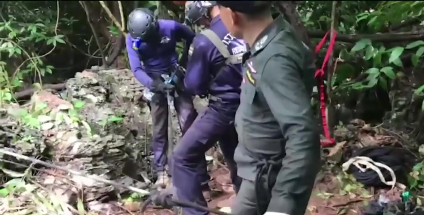
Elon Musk, as we know, is a renowned billionaire responsible for behemoth engineering companies such as Tesla Motors and SpaceX. He has also shown a tenacious attitude towards figuring out complex problems using his engineering prowess, as world events occur.
He recently, in a string of two tweets, said:
“Engineering is magic. Or at least the closest thing to magic that exists in the real world.”
And it’s that same magic that humans employ when disaster strikes.
Elon tweeted that statement on the 29th of June. On the 2nd of July news rang out across the globe that 12 teenage soccer team boys and their coach were stuck in a cave in the Chiang Rai Province in Thailand.
On the 23rd of June, the boys ventured 2,48 miles into a cave named the Tham Luang Nang Non underground cave complex after one of their soccer games. They became trapped after torrential rain flooded the cave.

To make matters worse further downpours were expected due to the treacherous monsoon season that descends on the area annually.
There was some relief when the group was found alive, but when a former Thai Navy SEAL died in the cave due to a lack of oxygen it became clear that the rescue mission would have to be extraordinary.
Elon Musk began tweeting about the technology he thought would assist the rescue operations. What followed was a torrent of suggestions from engineering professionals, all offering their two cents worth on what could be done, as rescuers worked against the clock.
Elon tweeted:
“I suspect the Thai government has this under control, but I’m happy to help if there is a way to do so. Boring Co has advanced ground penetrating radar and is pretty good at digging holes. Don’t know if pump rate is limited by electric power or pumps are too small. If so, could dropship fully charged Powerpacks and pumps.”
Musk’s first idea included drilling down into the cave and potentially lifting from the top - reminiscent of the Chilean Miner Rescue of 2010. Another idea included taking an inflatable nylon tube and weaving it through the cave, providing a waterproof escape route through the cave.
But then they came up with an idea that could be used for future cave rescues. Elon tweeted:
“Building double-layer Kevlar pressure pods with Teflon coating to slip by rocks and front/rear rope tow hitch and lead pockets for neutral buoyancy. ~60 cm oval. Testing this afternoon in a pool with a subject who has never done SCUBA. Do the divers think something like this might work? Probably wise to add an air tank (butt end foward to take impacts) in nose of pod and vent valve in rear. Set air tank to slow bleed rate, then no need for SCUBA mouthpiece or regulator. Training unnecessary and less susceptible to panic attack.”
They eventually ended up sending SpaceX and Boring Co. engineers to Thailand on the 7th of July to see if they could somehow assist the Thai government. Musk was ready to build a kid-sized submarine out of SpaceX rocket parts.
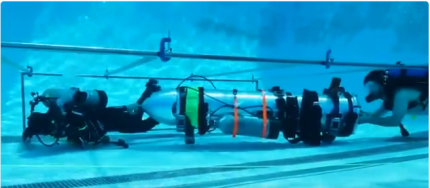
Meanwhile the SpaceX team built and experimented with a metal tube in a swimming pool in Los Angeles. However, news soon emerged that the dive teams could no longer delay the rescue because of forecast rains. On the 7th of July it was announced that the rescue mission was to commence. We’ll never know if Musk’s prototype could have worked, but perhaps it can be perfected for future rescue missions.
After being trapped for 15 days the rescue began. At the time of the writing of this article eight boys had been freed from the cave, leaving four boys and the coach waiting on their small sandy island deep inside.
Four boys were extracted at a time, with each one wearing a full-face diving mask and each one being guided through the labyrinth of caves and waterways by an expert diver.
John Volanthen, the lead diver on the Thai Cave Rescue said:
“I dive for passion and always wondered if it would have a purpose. The last two weeks was what I prepared for my entire life.”
Works Cited
“Elon Musk and His Engineers Develop Mini Kid-Sized Rescue Sub to Extract Soccer Team Stranded in Thai Cave.” Interesting Engineering, 8 July 2018, interestingengineering.com/elon-musk-and-his-engineers-develop-mini-kid-sized-rescue-sub-to-extract-soccer-team-stranded-in-thai-cave.
Musk, Elon. “Maybe Worth Trying: Insert a 1m Diameter Nylon Tube (or Shorter Set of Tubes for Most Difficult Sections) through Cave Network & Inflate with Air like a Bouncy Castle. Should Create an Air Tunnel Underwater against Cave Roof & Auto-Conform to Odd Shapes like the 70cm Hole.” Twitter, Twitter, 6 July 2018, twitter.com/elonmusk/status/1015105500105412610.

There are a number of fun activities to do in Perth, such as laser tag, rock climbing and super golf. Here are some of our favourites.
Latitude
This indoor aerial super park features over 100 interconnected Olympic-grade trampolines, where you can show off your backflips and other acrobatic tricks or just enjoy bouncing around.There are also a number of aerial activities, such as pink stepping poles and a high ropes course. Don’t forget to try out the rock climbing and abseiling as well! You can find Latitude in Edgewater.
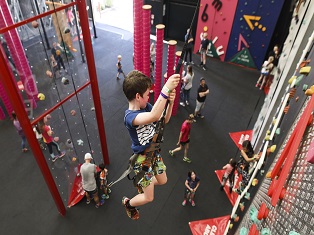
Lazer Blaze
If heights and acrobatics aren’t your thing – don’t worry. Why not try out a game of laser tag? Lazer Blaze runs Super Sessions for adults on Friday and Saturday nights. This consists of a variety of 10 minute mini-games. They also offer 90 minute games of laser tag during the week. They’re located in Willeton, Port Kennedy and Malaga.
The Maze
There are seven different mazes in this one location! Some of them are traditional and require you to find your way into the centre and then back out again. Others are brainteasers and have extra rules in place. While you’re here, you might as well play a game of mini-golf too.
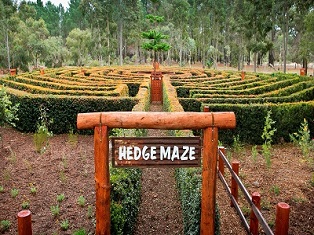
If you’re keen on wildlife, there’s also the opportunity to see koalas, wombats, emus and kangaroos. From September to April, there’s also a water park – get your heart racing on the three-storey high waterslides! The Maze is located in Bullsbrook.
SUPA Golf
This modified version of golf features golf clubs with oversized heads and giant golf balls, made of rubber plastic. These adaptations make it much easier to play. Visitors have the option of playing 9 or 18-holes of golf. Why not make a day of it and enjoy a game of Adventure Putt Miniature Golf? It’s just like regular mini-golf, only set in a jungle oasis amongst beautiful gardens and water features. SUPA Golf is located in the Swan Valley.
Battery life. If we could figure out how to lengthen it exponentially, the world would be a better place. And that seems to be what the researchers at the National University of Singapore (NUS) have - almost –achieved. They have invented a smart microchip that can continue powering a device even when the battery of the said device has been depleted.
In the not-so-distant future the technologies associated with the Internet of Things (IoT) will demand connectivity around the clock; to assure the safety and efficiency of businesses’ hardware.
Sensors, for example, are technologies that require 24/7 uptime; they need power sources to continue running. Because any number of sensors are required in a single process, they also need to be as small and as unimposing as possible – a significant challenge because smaller batteries do not have the capacity of their bigger counterparts.
The engineers from NUS designed a microchip to circumnavigate the battery life problem in batteries - and they’ve called it ‘BATLESS’. Using a tiny chip with an even tinier solar cell placed on top of it, the microchip uses light (even if its dim) to continue powering itself when the battery is depleted.
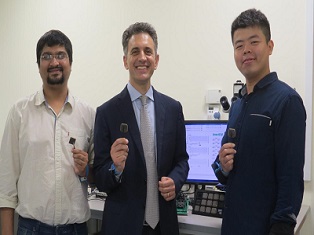
Associate Professor Massimo Alioto from the Department of Electrical and Computer Engineering at the NUS Faculty of Engineering said:
“We have demonstrated that batteries used for IoT devices can be shrunk substantially, as they do not always need to be available to maintain continuous operation. Tackling this fundamental problem is a major advancement towards the ultimate vision of IoT sensor nodes without the use of batteries, and will pave the way for a world with a trillion IoT devices.”
The batteries that these microchips can help power are ten times smaller than existing IoT node batteries and are consequently ten times cheaper to produce.
How it works
The battery and microchip power management solution is truly fascinating. The battery works as a normal battery would: The battery utilizes all its energy when powering something. However, when the battery life runs out, the smart-chip switches into a mode known as ‘minimum-power’. The chip then uses half a nanoWatt until a new battery can be replaced, but continues to power optimally.
Professor Alioto says:
“BATLESS is the first example of a new class of chips that are indifferent to battery charge availability. In minimum-power mode, it uses 1,000 to 100,000 times less power, compared to the best existing microcontrollers designed for a fixed minimum-energy operation. At the same time, our 16-bit microcontroller can also operate 100,000 times faster than others that have recently been designed for fixed minimum-power operation. In short, the BATLESS microchip covers a wide range of possible energy, power, and speed trade-offs, as allowed by the flexibility offered through the two different modes.”
The engineers say that the BATLESS microchip will be a perfect fit for ‘smart buildings, environmental monitoring, energy management, and adaptation of living spaces to occupants’ needs’. Utilizing the minimum power mode, the microchip can still ensure that data gets sent to the relevant mechanisms even when battery life isn’t present.
Works Cited
NUSingapore. “NUS Engineers Invent Smart Microchip That Can Self-Start and Operate When Battery Runs Out.” EurekAlert!, www.eurekalert.org/pub_releases/2018-05/nuos-nei050318.php.
“Smart Microchip Keeps Going When Batteries Run Dry.” Futurity, 26 June 2018, www.futurity.org/smart-microchip-batless-1794752/.
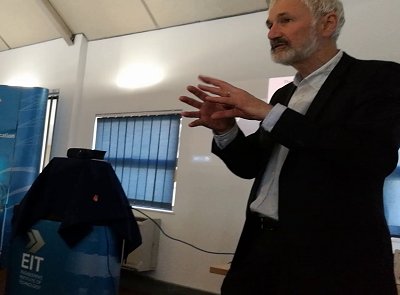
The digital world is a scary place. It is a place of automation, it is a place of digitization, it is a place of disruption. And it can’t be ignored. If you don’t have the skills for work as dictated by the fourth industrial revolution...you may be in trouble.
People may find themselves in jobs that will be automated out of existence in the near future. Thankfully, however, education and training is also undergoing a revolution and is ready to meet the challenge of bridging the digital skills gap.
To quell the anxiety, the Dean of Engineering at the Engineering Institute of Technology, Steve Mackay, presented to a room full of graduated and budding engineers in South Africa. The presentation was entitled: ‘Taking control of your Engineering Career & Learning in the new Digital World’. Mackay said:
“You may be doing something today, but tomorrow, you will be doing something completely different. The most important message is that you should commit to continuously learning.”
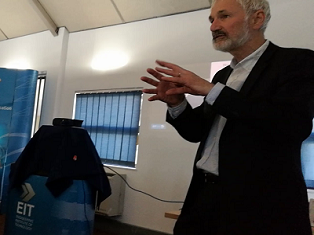
Mackay advises that a good rule of thumb, when deciding what discipline of engineering to pursue, is to consider what engineering skills your country desperately needs. That way, pursuing and getting a job in industry is more likely. He said:
“Look for the job demands of the country you are based in and be open to always learning and upskilling. Every country needs a certain kind of engineer - in fact; every town has its own particular demands and needs its own kind of engineers.”
Once students start to pursue their discipline, Mackay says, they will acquire qualifications. But they must not underestimate the value of learning informally, through practical tinkering with technology and learning the ropes of engineering, at work, through others.
Joining Mackay at the seminar was engineer and EIT lecturer, Deon Reynders. He currently teaches the Advanced Diploma of Industrial Automation, the Advanced Diploma of Electrical and Instrumentation (E&I) Engineering in Mining, and the Advanced Diploma of Mechanical Engineering.
He is also one of two instructors who is teaching the module known as Fundamentals of Project Engineering. Reynders suggested that engineering professionals should be constantly upskilling because of the rapid progress made in technology every decade.
“I graduated in 1972. One of our professors gave us a little farewell speech and he said: ‘Gentleman, I want to tell you something. The technology that you will use in your career does not exist yet’. I was taught using the slide rule and printed logarithm tables - there were no computers, no laptop, no mobile phone, there was no internet and no wireless.”
45 years later and Reynders is still a student of ongoing technological development. As a senior engineer, he has to be on top of all of the new developments in industry. He says:
“In 20 to 30 years from now you’ll laugh at this outdated junk; mobile phones, laptops. They will be archaic museum pieces. Things are changing rapidly, you can see it, it’s changing rapidly. You see technology merging. For example, for a couple of bucks you can buy a drone now which is a combination of mechanical and electronic engineering; it’s got camera, WiFi, incredibly complex control algorithms, and it will fly and land in your hand. It’s made by a team of multi-skilled engineers.”
Online learning
In 2007, he began lecturing online for EIT. The institution advertised a course in cyber security, and one student enrolled. After that, they created a course in data communications. Reynders has penned two books entitled: ‘Practical Industrial Data Communications: Best Practice Techniques’ and ‘Practical TCP/IP and Ethernet Networking for Industry’.
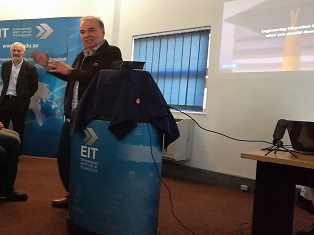
Reynders officially went rogue from his university past (he was once head of a department at the Walter Sisulu University) and decided to become a full-time, online lecturer, able to teach from any place he could find an internet connection. He lectures from his home office and plans to lecture from his yacht - which he is still building.
“We have to keep upskilling, multi-skilling, and learning. Otherwise, you’re gone...you’re dead. Thankfully, the methods of learning are also changing. The days of going to a university and sitting in the class and resigning from your job are numbered. In ten to fifteen years from now you will see the lecturer in virtual reality - but let’s take it one step at a time. But, meeting people online, and teaching and learning online, and accessing laboratories online, it is becoming the new paradigm. It’s the new way we do things.”
At the conclusion to the seminar it was clear that - when considering how to upskill oneself - the mindset should be: digital first, traditional second.
And finally Mackay commented on the future of engineering degrees. He believes they will become more niched with the focus on ‘micro-degrees’. These will be acquired throughout a career to keep workers industry-ready. They will equip those in the workforce with the necessary theory, but with the essential and relevant practical, hands-on skills needed in the engineering industries of today and into the future
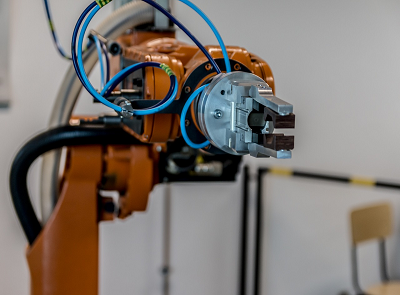
Real-time Big Data and Analytics - Mobility - the Internet of Things - Social Media - 3D Printing - Drones - Self-driving Vehicles.
What do all of these things have in common? They are all associated with the digital disruption of the supply chain. They are technologies that are contributing to the Industrial Automation of today and will have an impact into the future.
They are also terms we should all be acquainted with. If we can keep an eye on the technologies responsible for replacing repetitive jobs in the supply chain we will be better prepared to be part of the revolution rather than part of the fall-out. Autoware is an example of a company which is automating and increasing the efficiency of processes in the supply chain.
The company has helped other companies produce 800,000 desserts, 14 million vials, 8 million bottles of beer, 5 million packets of pasta, 900,000 packets of mouthwash, and much more. Smart manufacturing is enabling it. When a company requires a product to be mass produced, Autoware employs their Manufacturing Execution System (MES) and facilitates it.
Whilst technology plays an integral role in improving the efficiency of the supply chain, digital implementation has disrupted the industry from end-to-end.
Luigi De Bernardini the CEO of Autoware is dedicated to developing ‘Wireless, autonomous production operation architecture for cognitive manufacturing’. He says the supply chain from four decades ago does not exist anymore. Now, supply chains are logistics, manufacturing, and the autonomous delivery of the product - all in one. He writes:
“Delocalization of production and globalization have created new challenges in managing supply chains, introducing new complexity in logistics and quality control. The main challenge has become finding the right combination of low production cost, necessary quality of products or semi-finished goods and reasonable transportation costs, guaranteeing at the same time the availability of the products when needed.”
No replacing work - just jobs
A law firm named Littler Mendelson P.C. has tackled the tough topic of whether automation in the supply chain is a good thing. They put together a report named: “The Future is Now: Workforce Opportunities And The Coming TIDE. A Call to Action”.
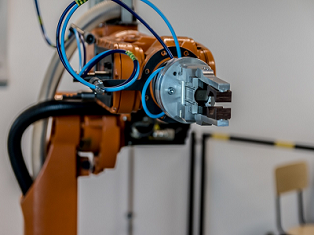
‘TIDE’ refers to the ‘technology-induced displacement of employees’. Top law and engineering firms agree - automation is and will continue to replace jobs. But, it won’t replace ‘work’ altogether. That is, if companies can meet workers halfway. The report states:
“The accelerating pace of automation will likely lead to productivity increases on a scale not seen since the Industrial Revolution, while displacing tens of millions of American workers from their current occupations. Too often, news reports dramatically focus on AI and robots as job killers. Unfortunately, the debate over whether jobs eliminated will outnumber jobs created ignores two related and no less important questions: 1) With the fast-paced arrival of innovative and transformative technologies, will workers whose jobs are most likely to be disrupted have the skills and training required for the new jobs being created? 2) Will employers be able to fill existing vacancies as this unstoppable transformation occurs?”
Bernardini agrees that smart manufacturers that utilize an automated supply chain must change to accommodate the digital future. He concludes:
“The hard work done in the past to optimize the supply chain in a delocalized environment is almost useless in the new world enabled by the usage of the technologies that have become available and affordable. A new approach -- and especially a cultural shift -- is needed in considering the end user as an active and driving part of the supply chain itself.”
Works Cited
“Digitalization Is Disrupting the Supply Chain.” Is Writing an Essential Skill for Engineers? | Automation World, www.automationworld.com/digitalization-disrupting-supply-chain.
Selko, Adrienne. “Automation Eliminates Jobs Not Work: New Report.” IndustryWeek, 22 June 2018, www.industryweek.com/talent/automation-eliminates-jobs-not-work-new-report.
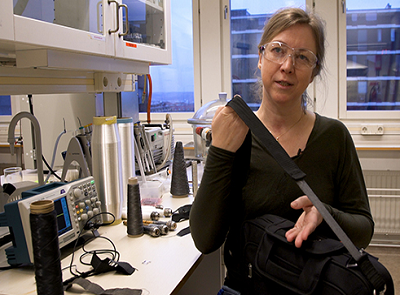
In the 22 March edition of the Nature Partner journal of Flexible Electronics, a report was published that might just redefine our clothing of the future.
The Swedish School of Textiles and research institute, Swerea IVF, conducted studies on how electrostatic power can be generated from textiles. Researchers from Chalmers University of Technology put those studies to the test.
The researchers used what is known as a piezoelectric material. These are materials that generate an electric charge when put under mechanical stress. Cigarette lighters utilize Piezo ignition by slamming a hammer into a crystal that then ignites the gas. It also powers camping stoves, gas lights, and gas grills.
Engineers have envisioned, for some time, a world where piezoelectricity could power everyday items through kinetic energy.
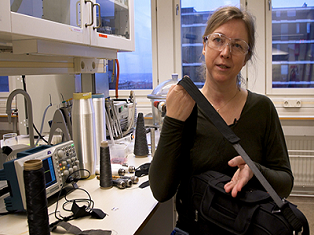
Researchers at Chalmers University of Technology have designed a fabric that converts kinetic energy into electric power using piezoelectric means. Using piezoelectric yarn the researches have designed a textile which carries an electric current when stretched (this applies the mechanical stress to the material).
One of the researchers, Anja Lund explains:
“The textile is flexible and soft and becomes even more efficient when moist or wet. To demonstrate the results from our research we use a piece of the textile in the shoulder strap of a bag. The heavier the weight packed in the bag and the more of the bag that consists of our fabric, the more electric power we obtain. When our bag is loaded with 3 kilos of books, we produce a continuous output of 4 µW. That’s enough to intermittently light an LED. By making an entire bag from our textile, we could get enough energy to transmit wireless signals.”
The researchers say the stretching of the textile has generated a charge that produces enough power to ‘light an LED, send wireless signals or drive small electric units such as a pocket calculator or a digital watch’. The only problem? The signals are intermittent.
Using a heavy bag with the piezoelectric textile fitted to the shoulder strap, the researchers demonstrated how they could power an LED. Lund believes that sensors can be ultimately powered by the textiles.
The textile works even better when it becomes wet and therefore heavier. It follows then that when exercising and sweating while wearing these textiles, they have the potential to power sensors and generate enough power to connect via Wi-Fi to an Internet of Things network (freely available around every corner in the future).
Works cited:
Electric textile lights a lamp when stretched. https://www.chalmers.se/en/departments/chem/news/Pages/Electric-textile.aspx

The UK government has dubbed 2018 the ‘Year of Engineering’. And as the year gallops into its final five months, innovation in Africa is a hot topic too. South Africa and Zimbabwe have both seen new presidents thrust into power, which may have also stimulated changes.
There also seems to be a renewed appetite for innovation in education and training - part of the blossoming global economy.
The UK government attended the Royal Academy of Engineering Workshop - hosted at Zimbabwe’s NUST University. They were represented by Catarina Laing from the University of Strathclyde in Scotland.
In 2015, the UK government set up the Global Challenges Research Fund. The £1.5 billion fund has been working to support cutting-edge research that addresses the challenges faced by developing countries.

They're particularly concerned about the number of people studying engineering in the UK - more specifically the fact that fewer girls are interested in studying engineering. Laing said:
“Engineering success is absolutely vital to the future of the UK, Zimbabwe and indeed all countries. We’ve seen how in the UK what a massive contribution engineering and engineering research makes to the UK economy and to the lives of UK citizens. Back in 2015 it was reported that engineering-related sectors have contributed around 280 billion pounds to the UK’s Gross Value Added in 2011 - about 20 percent of the total.”
Zimbabwe’s engineers and the engineering industry are well placed to help revitalize their economy and bring them out of the historical hyperinflation they have seen in the last few decades. However, with political tensions still present in the country, uncertainty reigns.
LEGO lends a helping hand
Another hot topic is the renewed push to prevent attrition rates in science and mathematics in schools. The United Kingdom, for example, continues to push for overhauling education and training in engineering. In this environment LEGO is reminding the world that the development of affection for STEM (Science, Technology, Engineering and Mathematics) starts with LEGO.

LEGO are now supporting the ‘Year of Engineering’ national campaign and will be travelling around the UK, visiting primary schools and inspiring the UK’s future engineers. The UK government said they see a shortage of 20,000 engineering professionals per year. On top of that, only 12% of engineers in the UK are female.
Therefore, LEGO will be running the ‘The Engineers of the Future’ roadshow. They will be giving children hands-on experience with new technologies and the opportunity to hear already prominent engineers speak about their careers.
Minister for the Year of Engineering, Nusrat Ghani said:
“Engineers are at the forefront of technology and infrastructure advances which are shaping all of our lives, from how we communicate and travel to tackling major challenges in healthcare and the environment. But the opportunities of this creative, innovative and hugely important profession are all too often misunderstood and overlooked by young people and their parents.”
The students will take part in challenge called the FIRST LEGO League. The challenge will see students trying to make sense of and solve some complex engineering problems.
Camilla Bottke, Head of LEGO Education After School and Competition said:
“For more than 35 years it has been our mission to inspire and develop all children, equipping them with the right skills to empower them to succeed, whatever their background and whatever the ambition. Our experience shows us the importance of supporting development of STEM skills in children from an early age. We are delighted to be part of the UK government’s ‘Year of Engineering’ initiative to further our commitment to developing these important STEM skills in children across the country and leveraging technology to give children the opportunity to become aspiring engineers.”
Works Cited
Commonwealth Office. “Engineering Success Vital to Zimbabwe's Future: UK Ambassador.” GOV.UK, GOV.UK, 18 June 2018, www.gov.uk/government/speeches/engineering-success-vital-to-zimbabwes-future-uk-ambassador.
“LEGO® Teams up with Year of Engineering Campaign to Inspire and Develop the Engineers of the Future.” GOV.UK, GOV.UK, www.gov.uk/government/news/lego-teams-up-with-year-of-engineering-campaign-to-inspire-and-develop-the-engineers-of-the-future.
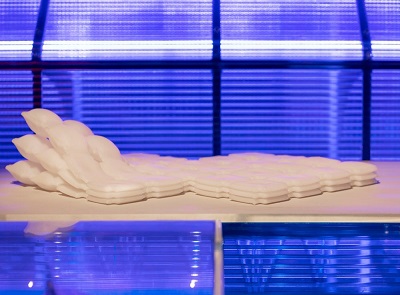
Imagine for a second the kinds of innovation that could occur if MIT (Massachusetts Institute of Technology) and BMW joined forces. Well, stop imagining. The two have joined forces. But, not necessarily in the way you might have thought. The university and the car manufacturer have linked arms, and are ready to harvest their latest obsession: air.
The engineers from MIT’s Self Assembly Lab and BMW have created a new 3D printed structure utilizing a process known as ‘Liquid Printed Pneumatics’.
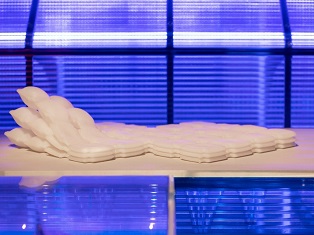
The interdisciplinary collaboration between engineers and labs has created the first material that can morph from one shape into another shape - thanks to air...and rapid liquid printing. The printer emits the necessary liquid material into a mould which then hardens.
The printer is able to print 100 percent silicone rubber into sophisticated structures, structures like air chambers. These ‘air pockets’ can inflate or deflate based on how they are ‘programmed’. Traditional 3D printers have struggled to perfect sizeable prints and have stuck to small-time hard plastic prints. But now, with the new fabrication process, bigger prints are guaranteed.
Skylar Tibbits, the co-director and founder of the Self-Assembly Lab refers to the work they do as ‘4D printing’; 3D printed objects that can adapt, morph and assemble based on necessity. Talking about their new air-bubble 3D printed innovation, Tibbits spoke to FastCompany, saying:
“It’s programming it with air. Instead of zeros and ones, you’re sending different pulses of air.”
The result is a material that appears to be alive and moving. Now, BMW just needs to find a use for the technology on the inside or outside of their cars. But something tells us they won’t have a problem coming up with a concept.
Historical adaptive designs
This isn’t the first time BMW has flirted with the idea of a vehicle that could adapt to the needs of the driver, and even the needs of the environment it is driving in. In 2008, the company introduced a concept car that had a body of fabric.
The car’s name was GINA (Geometry and functions in ‘N’ Adaptations). Flexibility and stretchability was a big focus for the engineering team - which had begun work on the car as far back as 2001. The idea, however, is a novel one. If a car’s exterior was stretchable, flexible and non-rigid, it could - if the technology was more fleshed out - heal itself after an accident.
Aerodynamics was also a focus. The car would change shape at different speeds to make the car as aerodynamic as possible, literally morphing and adapting on-the-fly.
What is apparent is that BMW has been attempting to innovate within the exterior and interior designs of cars for ten years now. The engineers at BMW and MIT believe that the inflatable materials they have recently designed could be used in the interior of the vehicles in the future - an adaptable material that could be tailor made for the customer.
Tibbits explains that the customer could ‘programme’ the kind of interior design they would want on any given day inside their car. He said:
“The interior could be different every time you got in, for every person who got in. By using pressure differential inside and out, you can make it morph around a human or object.”
Thereby, when cars are autonomous and the driver felt like having a nap, they could program the many airbags in the interior to morph into a more relaxing environment for the passenger inside.
Works Cited
Schwab, Katharine. “MIT and BMW Are Building the Stretchy, Inflatable Future of Cars.” Co.Design, Co.Design, 22 May 2018, www.fastcodesign.com/90173037/mit-and-bmw-are-building-the-stretchy-inflatable-future-of-cars.
Squatriglia, Chuck. “BMW Builds a Shape-Shifting Car Out of Cloth.” Wired, Conde Nast, 10 June 2008, www.wired.com/2008/06/bmw-builds-a-ca/.

Last month we took a look at the (new) tallest building in the world which belongs to the Kingdom of Saudi Arabia. It is The Jeddah Tower, which is set to trump the previous record holder for the tallest building in the world - the Burj Khalifa. But, this isn’t the only impressive feat of civil engineering currently solidifying its place in the history books.
The projects detailed here are all projects that are utilizing new technologies, using new design philosophies, or simply becoming the biggest of their kind in the world. What remains clear is, civil engineering, globally, is ‘reaching new heights’ every year.
Hong Kong-Zhuhai-Macau Bridge
This year marks the opening of the Hong Kong-Zhuhai-Macau Bridge which crosses Lingdingyang in China. It has been dubbed the Longest Sea-Bridge ever built - it spans 34 miles (55 kilometers).
How long does a bridge like this take from the idea phase to the final construction phase? Only 15 years. The Chinese government tasked the engineers with testing the feasibility of a bridge that would traverse the Pearl River Delta in 2003. The bridge would be essential to China’s Greater Bay area and lead to economic prosperity. The bridge has been completed and is ready for use this month.
The bridge utilizes a bridge-tunnel system, which consists of a series of three cable-stayed bridges, and one undersea tunnel. There are also three artificial islands that now link Hong Kong, Macau, and Zhuhai - three metropolitan cities.
Normally, the commute from one city to the next would take commuters three to four hours. Now, with the bridge in place, the travel time between cities will only be 30 minutes. The bridge construction cost: an estimated USD$15 billion.
The engineers of BYME Engineering brought together the latest in bridge building materials to construct the bridge.
Central Park Tower
A project that will also reach the billion dollar mark when completed is set to be Manhattan’s new jewel in its crown. It’s the Central Park Tower. It is located at 217 West 57th Street.
adrian__smith__and__gordon__gill__architecture(1).jpg)
The building is set to be a mixed-use building of the future. The architects and engineers have been closely following a construction philosophy called ‘Global Environmental Contextualism’ - a philosophy that will become increasingly popular. The idea is to design and construct with the natural environment in mind; using nature as an inspiration for designing.
The building, still under construction, will reach ‘supertall’ status (which is above 985 feet or 300 meters) upon completion. The Shanghai Municipal Investment Group and the Extell Development Company are behind the construction.
The construction will use the latest in cutting-edge engineering technologies and ensure the carbon footprint is as small as possible. It is expected to open in 2020.
Heathrow
The United Kingdom intends to expand Heathrow International Airport; an airport which has been in existence for 100 years. The expansion will officially make Heathrow the biggest airport in the world.

The airport will add a third runway. Heathrow currently has 80 million passengers through it every year; the expansion will see the number rise to 110 million passengers by 2030. This will also make the airport the busiest in the world. According to CNN Travel, the airport is currently only the 7th busiest in the world.
The UK government obviously foresees an increase in the number of people flying locally and internationally and it will be a necessary injection of funds in a post-Brexit UK. British members of Parliament have just given the go-ahead for the new Heathrow runway, despite historical opposition.
The expanded Heathrow is expected to cost £14.3 billion (US$20 billion) and another hurdle: the houses that are presently located where the build is proposed. The villages of Longford, Sipson and Harmondsworth would need to be demolished if the airport goes ahead.
The expansion has been hotly contested, understandably. But the civil engineers are gearing up to start building this state-of-the-art runway at Heathrow. The move will generate many temporary and some permanent jobs too.
Works Cited
“11 Civil Engineering Projects That Might Define the Future.” Interesting Engineering, 26 June 2018, interestingengineering.com/11-civil-engineering-projects-that-might-define-the-future.
“11 Civil Engineering Projects That Might Define the Future.” Interesting Engineering, 26 June 2018, interestingengineering.com/11-civil-engineering-projects-that-might-define-the-future.
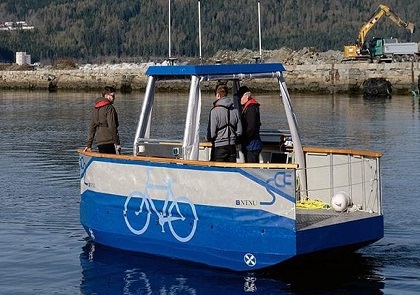
The world’s first driverless ferry is set to replace footbridges in the Norwegian city of Trondheim. Soon pedestrians will be able to cross the canal that separates the Ravnkloa fish market and the Vestre Kanalhavn dock much quicker than they’ve ever been able to before.
With the population growing steadily, engineers have been faced with the challenge of creating more river and canal crossings — however bridges can be costly to build and obstruct the flow of boat traffic. A team at the Norwegian University of Science and Technology (NTNU) has designed a self-propelled Autoferry to solve this problem.
There’s currently a small number of unmanned cable ferries located at various locations in Norway. However, this project aims to remove the cable, which will reduce operating costs and revitalize coastal areas.
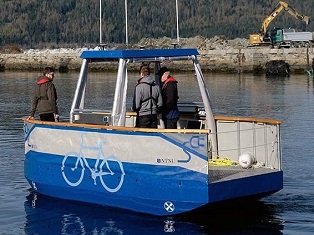
So how does this ferry work? An on board Global Navigation Satellite System (GNSS) will help the vessel to self-navigate from one bank to another. Four integrated light sensors — a radar unit, an infrared camera, an optical camera and a Light Detection and Ranging (LiDAR) unit —will allow the ferry to detect and avoid kayakers and other boats. If it’s on the opposite side of the canal to waiting passengers, they can call it over with the press of a button.
While researchers at NTNU have been working with autonomous vessel management systems for years, they’ve never trained a computer to predict movements or read complex traffic scenarios in such great detail before.
The Autoferry takes approximately one minute to cross the canal, which is just less than 100 metres wide. It currently takes pedestrians 10-15 minutes to cross using the footbridge. The watercraft will be able to hold 12 passengers, plus bicycles and baby strollers.
Speaking to Gemini Research News, the head of NTNU’s department of engineering cybernetics Morten Breivik said the project has had its share of obstacles.
“One of the challenges of the project is that all these systems need to work well together. We also want to have sensors on land that can monitor blind zones,” he said.
The Autoferry isn’t quite ready to carry members of the public across the canal. Engineers are currently conducting a series of tests to ensure its safety. In phase one, the boat traffic in the canal was monitored and recorded. Phase two saw the construction of a half-scale ferry (five metres long). The propulsion systems, batteries and charging systems were all tested. Researchers are now developing the navigation system, automatic docking and testing the ferry’s anti-collision sensors.
Phase three will commence soon: it will involve putting the full-scale ferry into action and final testing of the technology.
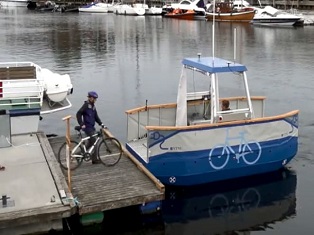
NTNU’s head of department of electronic systems associate professor Egil Eide is in charge of operations for the Autoferry. He told Gemini Research News that he believes the driverless ferry will improve the quality of life for citizens.
“Driverless ferries can help develop regions that previously haven’t been linked to cities and towns due to a lack of infrastructure, for example,” he said.
“We believe that an industry will evolve from this project. The driverless ferries can become a new tool in community planners’ toolboxes.”
Researchers hope these ferries can one day connect to a city’s existing forms of transport and be used as an alternative form of emissions-free passage. They are also optimistic that these ferries could revitalize small island communities by providing a cheap form of transport. Researchers are now investigating a way to make the technology scalable, so ferries can be used over longer distances in rural areas.
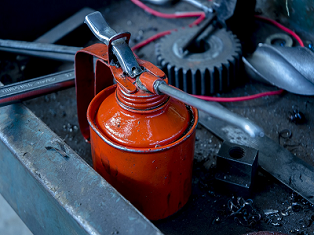
Grease (lubricant). Engineering industries’ little talked about best friend. Lubricants are present in many engineering industries: Power Generation, Water & Wastewater, Food & Beverage, Oil & Gas, Transportation & Fleet industries, and more. Lubricants simply help machines run at optimum efficiency - and have given rise to the term ‘a well-oiled machine’.
Industrial lubricants also ensure that machines stay healthier for longer. Reducing the amount of friction a machine undergoes during its operation is lubrication engineers’ bread and butter. For fleet owners, for example, having trucks work around the clock is an important outcome for their business models. Trucks still play a vital role in our modern day world - countless industries depend on trucks to get product from ‘A’ to ‘B’. Engine oils, transmission fluids and fuel supplements are important to the truck’s efficiency and lifecycle.
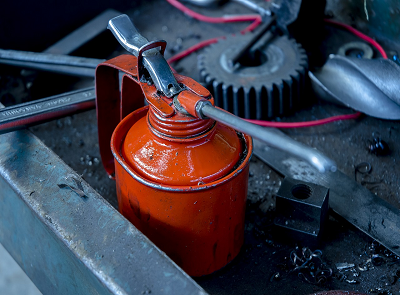
But how much innovation is occurring in the lubrication industry? It turns out that it is quite a bit.
Oil quality is a big focus of the grease world where innovation is welcomed. New blends of greases are being designed that can withstand far more heat and can lead to far less wear and tear - it is all done with synthetic-blend compositions.
A technical services manager for CHS Transportation, talking to Fleet Owner, says:
“Grease isn’t just grease. It’s changed. The quality of the base oil is incredibly important. It’s the majority of what goes into the grease. Synthetics tend to have better life expectancy. You want grease to stay in place so it can do its job where it’s supposed to do its job.”
Country specific recipes
Modern day synthetic greases are 70 to 90% base oil and the remainder is thickener. As newer technologies were introduced into the lubricant industries the thickener has vastly improved; now holding oil better than most greases in the past. Historically, greases would see much oil run-off and wastage.
Even modern day conventional oils sometimes fall short in countries where temperatures drastically drop during winter. Thus, there are specific standards developed per region, catering for what oils are needed. However, there are universal lubricants for specific industries.
Using synthetic oils that are specifically designed to work in those lower temperatures is advisable. But lubricants are not only utilized to keep those truck engines running in winter, they are also used to stop excessive metal-on-metal contact, Ball bearings are in the direct line of experiencing wear and tear. Woetzel says:
“You’ve got to avoid metal-to-metal contact at all cost. Any kind of direct contact leads to wear and tear, which eventually causes problems down the road.”
Future Markets Insights believe that the global industrial lubricants market will be seeing a high growth rate in the next few years due to the growing automotive industry. Power companies and plant operators also utilize oils for their turbines. Where there is machinery, there is always a need for some grease.
Another issue confronting lubricant makers is the need to create them with the environment in mind. Synthetic and renewable, non-hydrocarbon oils is where the industry has been moving to, and engineers have to adapt.
Online sensors have also made their way into the industry. The sensors scan the lubricants and analyze the lubricants in real time to ensure they are effectively offsetting the wear and tear occurring inside a machine. The need for efficiencies and preserving technologies over time has given rise to lubricant innovation, and more can be done despite synthetics being in existence for many decades now.
Mobil recently celebrated 150 years of lubricant innovations. To see how they built their entire company around lubricants - which propelled the industrial revolution forward - is shown in this video:
Lubricants simply keep the world moving. And they will be with us for many years to come to improve efficiencies, circumnavigate the wear and tear of machines, and keep things going along smoothly.
Works Cited
12, Jun. “Grease: The New Frontier in Fleet Technology.” Fleet Owner, 13 June 2018, www.fleetowner.com/lubricants/grease-new-frontier-fleet-technology.
Budholiya, Abhishek, and Himesh Khatri. “In-Depth Forecast & Analysis on Industrial Lubricants Market for 2015 – 2025.” SatPRnews, www.satprnews.com/2018/06/11/in-depth-forecast-analysis-on-industrial-lubricants-market-for-2015-2025/.

The Tottenham Hotspur Football Club has recently announced their new stadium has been “future-proofed” to accommodate safe standing, should the legislation in the UK change.
Standing during games has been banned at in the top two divisions of English football since
As a result, the Football Supporters’ Federation launched a petition to overturn the ban and give football clubs a choice to implement safe-standing areas for fans. The now-closed petition garnered over 112,000 signatures and sparked a debate in Parliament on June 25.
The English Football League and the Premier League both hold the position that clubs should have a choice as to whether their fans can sit or stand during a match. The Labour Party has also called for the law to be changed.
The Hillsborough Justice Campaign (HJC) was established in order to seek justice for those who were injured or killed in the crush, and their families. In a blog post for metro.co.uk, HJC campaigner Sheila Coleman expressed her concern that some people are against safe-standing because of the Hillsborough disaster. She said this is disingenuous as it implies that standing was a factor that led to the tragedy.
“It remains the collective view of the HJC that standing never killed anyone at a football match,” she said.
“Within the
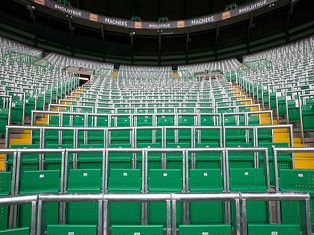
Tottenham Hotspur executive director Donna-Maria Cullen echoed these sentiments in a press release from the club.
“As a Club, we did not engage on this until the Hillsborough Inquiry was concluded, which showed that the tragedy in April 1989 had not been caused by standing,” she said.
“We then conducted research with our fan base which showed overwhelming support for safe standing. The main reasons given were choice and atmosphere - fans cannot sing sitting down.”
Designing the new stadium to accommodate safe standing has sparked the question as to whether it’s possible to convert seated areas to standing areas in old stadiums. These safe standing areas are characterised by rail seating — fixed rail barriers with attached fold-up seats to designate each standing slot.
Speaking to New Civil Engineer WSP UK’s head of stadium Peter Chipchase said this shouldn’t be an issue provided the stadium passes a number of stress tests first.
“In terms of converting an existing
“Modern stadia are designed at 4kN/m² but currently only holds 2kN/m², so increasing capacity would be no
Dynamics would also need to be tested, according to Chipchase, to avoid the stands from vibrating underneath the crowd.
“In Frankfurt, the Eintracht fans know that if they all jump at the same time they can get the stands to move up and down with them. It is pretty scary to watch and they could be resonating the tier to collapse,” he said.
“They are able to get it going because the stands are designed with a frequency of 2Hz. That wouldn’t be possible in a modern stadium, as they are all designed with a frequency of 6Hz.
“I can’t think of a single stadium in the UK that would have an issue with dynamics, but they would still have to be tested before being converted.”
While dynamics and capacity may not be a problem, sightlines and old terraces could cause issues.
Mott MacDonald technical director Nick Ling told New Civil Engineer that visibility of the field could be reduced, as people wouldn’t necessarily be able to see over the person in front of them.
“Standing sections increase the risk of reduced C values or even negative values,” he said.
“So sightline and C value issues could mean that tiers need reprofiling which could result in a change to the structure and retracing.
“It is feasible for some stadia, but more difficult for others. If sightlines are tight, it could be difficult to make the alterations required.”
Another issue he flagged was that fixing barriers to old terraces could be structurally challenging and require more capital investment.
These rail seats have been trialled at Scotland’s Celtic Park and across Europe, where they are particularly popular in Germany. Reasons for this are that they increase the stadiums’ capacity and allow fans to safely stand throughout the game if they choose to.
The new 62,000 seat stadium is set to open later this year.
Blog - Steve Mackay
EIT's Technical Director, Steve Mackay, enjoys keeping his blog up-to-date with useful tips and current industry matters for his fellow colleagues. He has a loyal and expanding following base reaching over 300,000 people around the world.
Student Stories
In this section you have the opportunity to read and listen to EIT students talking about the reality of the programs. Discussions are wide-ranging and include information about the study commitment required, the value of the qualification in their careers, the relevance of the subject matter, future pathways, and more. They provide valuable feedback for you to take into account before you decide to join one of our programs.
Career Information
Latest career information including industry research, podcasts, blogs, life hacks and general information about how you can make the most out of your career.
Education
Here you will find out more about the latest trends and developments within education worldwide, along with some helpful articles regarding study tips and keeping on track with your studies.
Developments
The latest innovation and inventions from the world of engineering can be found here. Learn about advances in technology and how they can make a real difference within your industry.
Announcements
Keep up to date with the latest announcements from the Engineering Institute of Technology. In this section you can read more about new courses, new recognition from professional bodies, our Excellence in Teaching Award, upcoming free webinars and much more.
Monthly Update
We understand that you may not have time to read all the articles that we post, so our monthly update gives you access to some fascinating articles which cover the best of the months news in a compact format.
